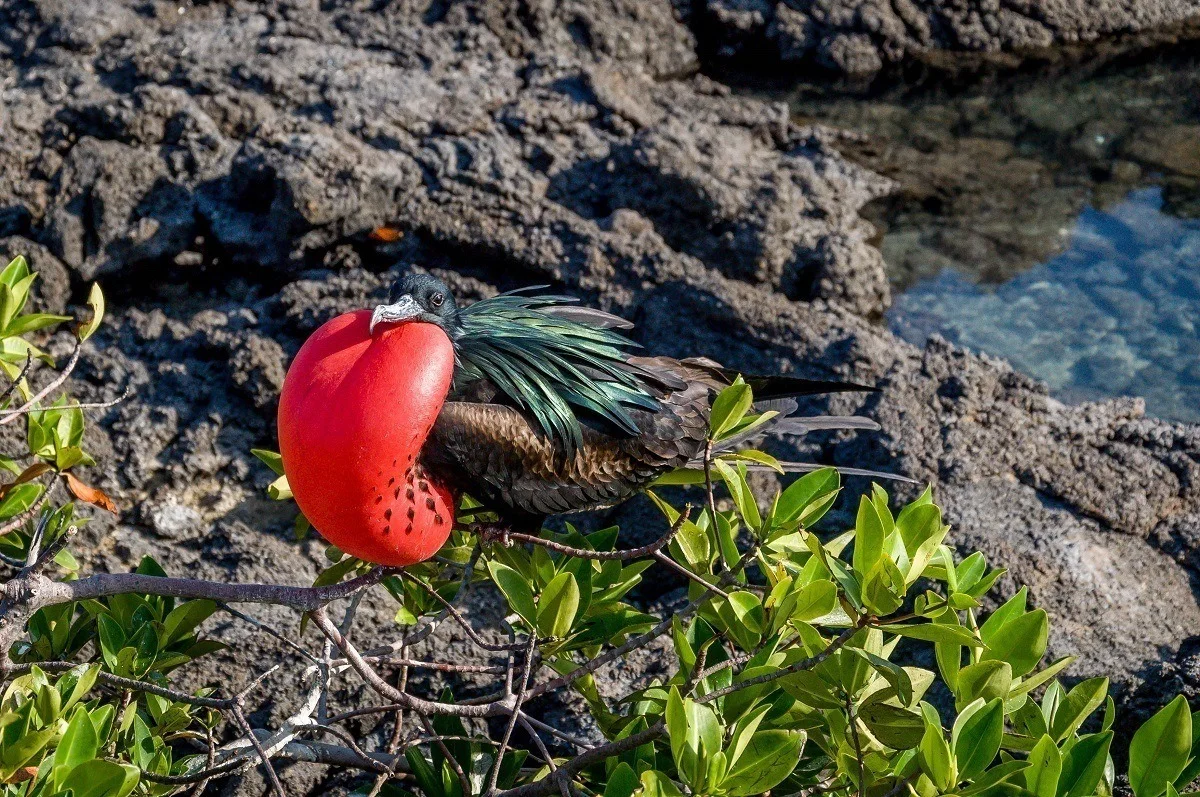
For many travelers, these remote islands represent a pinnacle on their bucket lists. It’s a destination so remote that travelers dream for years to visit. At least it was that way for us. After years of hoping and planning, our own adventure was at hand. While the Galapagos islands themselves are individually beautiful, it is really the Galapagos animals that we wanted to see–the wildlife that first inspired Charles Darwin.
“I am very anxious for the Galapagos Islands. I think both the geology and the zoology cannot fail to be very interesting.”
– Charles Darwin
It was on this remote archipelago that Charles Darwin first observed differences between various bird species (notably finches). He noted how the Galapagos wildlife, particularly the birds, were so similar, yet so different to other species he was accustomed to. This led to theories on transmutation of animals and eventually the theory of evolution. And the rest, as they say, is history. And it was all due to the very unique animals of these islands!
“The natural history of this archipelago is very remarkable: it seems to be a little world within itself.”
– Charles Darwin
Like Darwin, we arrived in the islands on the Beagle (our M/S Beagle to his HMS Beagle). Having recently been on safari in South Africa, we thought we knew what to expect in terms of proximity to the animals in the Galapagos Islands. We were wrong.
Because of the tremendous isolation of the islands, the animals are unafraid of people. They can be as curious about you as you are about them. There were times when we had to literally step over animals to get where we were going.
- Galapagos Tortoise
- Galapagos Green Sea Turtle
- Galapagos Land Iguana
- Galapagos Pink Land Iguana
- Galapagos Marine Iguana
- Galapagos Lava Lizard
- Galapagos Sea Lions
- Galapagos Fur Seal
- Galapagos Penguin
- Bottlenose Dolphin
- Golden Rays
- Galapagos Diamond Stingray
- The Sally Lightfoot Crab
- Pacific Seahorse
- Galapagos Flightless Cormorants
- Frigatebirds
- Blue-Footed Booby
- Nazca Booby
- Red-Footed Booby
- Short-eared owl
- Galapagos Hawk
- Swallow-tailed Gull
- Lava Heron
- Brown Pelican
- Great Blue Heron
- Galapagos Yellow-Crowned Night Heron
- Galapagos Flamingo
- Darwin’s Finches
Galapagos Tortoise
If you ask most visitors, they would say that the animal they most want to see is the giant tortoise (Chelonoidis nigra). These majestic giants were almost hunted to extinction. Once numbering over 250,000, their numbers declined to just under 3,000 in the 1970s. Much of that decline was due to hunting by pirates and sailors.
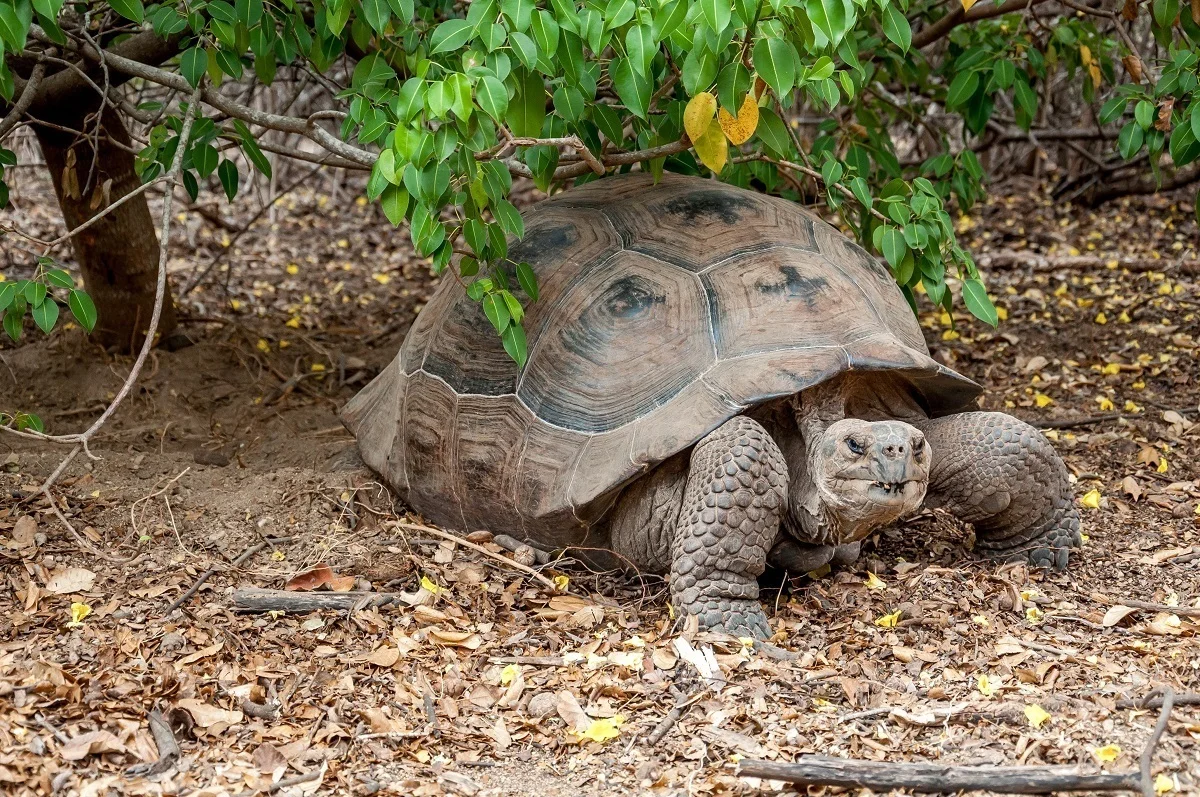
In 1835, Charles Darwin visited the islands of San Cristobal and Santiago and noted the differences in the tortoise populations on each island. These key differences helped him refine his theory of evolution (mutability). He ultimately left the islands with over two dozen tortoises, but used them for eating, partially contributing to their declining numbers.
Through efforts at Charles Darwin Research Station and the Giant Tortoise Breeding Center on Isabela Island, the tortoises are back. While all visitors can see the tortoises at the breeding centers, we were fortunate to see several giant tortoises on Isabela Island in their natural habitats. They were as curious about us as we were about them.
Galapagos Green Sea Turtle
Coming to Ecuador, the top item on Laura’s animal list was the green sea turtle. She had never seen a sea turtle in the wild. She was not disappointed! We saw Galapagos green turtles (Chelonia agassizii) at almost every single one of our snorkels, particularly at Punta Vicente Roca on Isabela Island where there were so many turtles you could almost walk across the small cove without getting your feet wet.
We learned that the green turtles are endemic to the islands are actually a slightly different species than green sea turtles found elsewhere in the world. They were listed as endangered in the 1980s and only about 1400 breeding females still live in the islands.
Galapagos Land Iguana
The giant Galapagos land iguana (Conolophus subcristatus) is completely unique to the islands. They can grow to almost six feet long and can move remarkably fast. The iguanas are threatened and have been hunted to extinction on several islands, with only 5,000-10,000 of the animals left on the islands. Unlike the abundance of marine iguanas, we only encountered the land iguanas twice, both times on Isabela Island.
In the 1990s, the Charles Darwin Research Station began a breeding program for these giant creatures and there has been a focus on reintroducing them on the Baltra island. It’s not uncommon to see land iguanas at Baltra airport. We saw evidence of land iguana burrows on Baltra, but didn’t actually see them.
Galapagos Pink Land Iguana
The pink land iguana (Conolophus marthae) is one animal you are guaranteed not to see in the islands. The pink iguana is critically endangered and it is believed only 200 are left in existence.
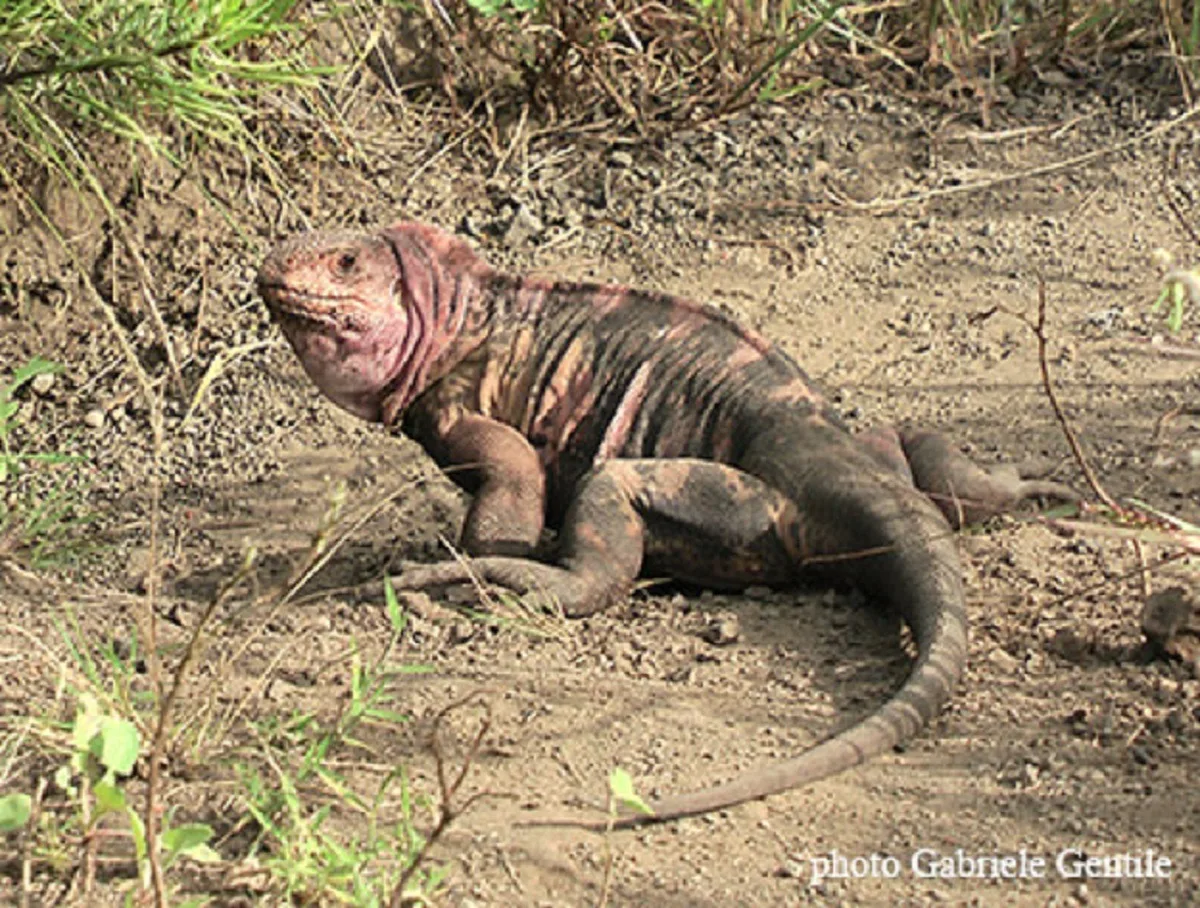
These iguanas make their home high on the slopes of Mt Wolf, the tallest mountain in the Galapagos Islands. It is prohibited for tourists to visit the area as Mt Wolf is still an active volcano and a protected part of the national park.
The pink iguanas were first seen by park rangers in 1986 and were later classified as entirely separate species in 2009. It shows the evolutionary forces identified by Charles Darwin are still shaping the animals here today.
Galapagos Marine Iguana
Unique among reptiles, the black and gray Galapagos marine iguanas (Amblyrhynchus cristatus) actually swim into the sea to and eat the red algae. They submerge themselves under water several minutes eating, although some marine iguanas have been known to submerge to depths of nearly 100 feet and stay down for nearly an hour.
Once returning to the surface, they need to sun themselves on the lava to raise their body temperatures. They are also known for their hissing and spitting. The salt from the seawater and algae accumulates in their glands and needs to be expelled through an act that is most closely related to spitting or sneezing.
We encountered the marine iguana in the ocean and they were kind of spooky. The swim surprisingly fast and one swam straight at Laura, startling her. On land, the marine iguanas are so plentiful that we literally had to step over them to get where we were going.
Galapagos Lava Lizard
The Albemarle lava lizard, or as it is more commonly known as the Galapagos lava lizard (Microlophus albemarlensis), is an endemic species throughout nearly all of the islands. There are actually seven lava lizard species in the Galapagos.
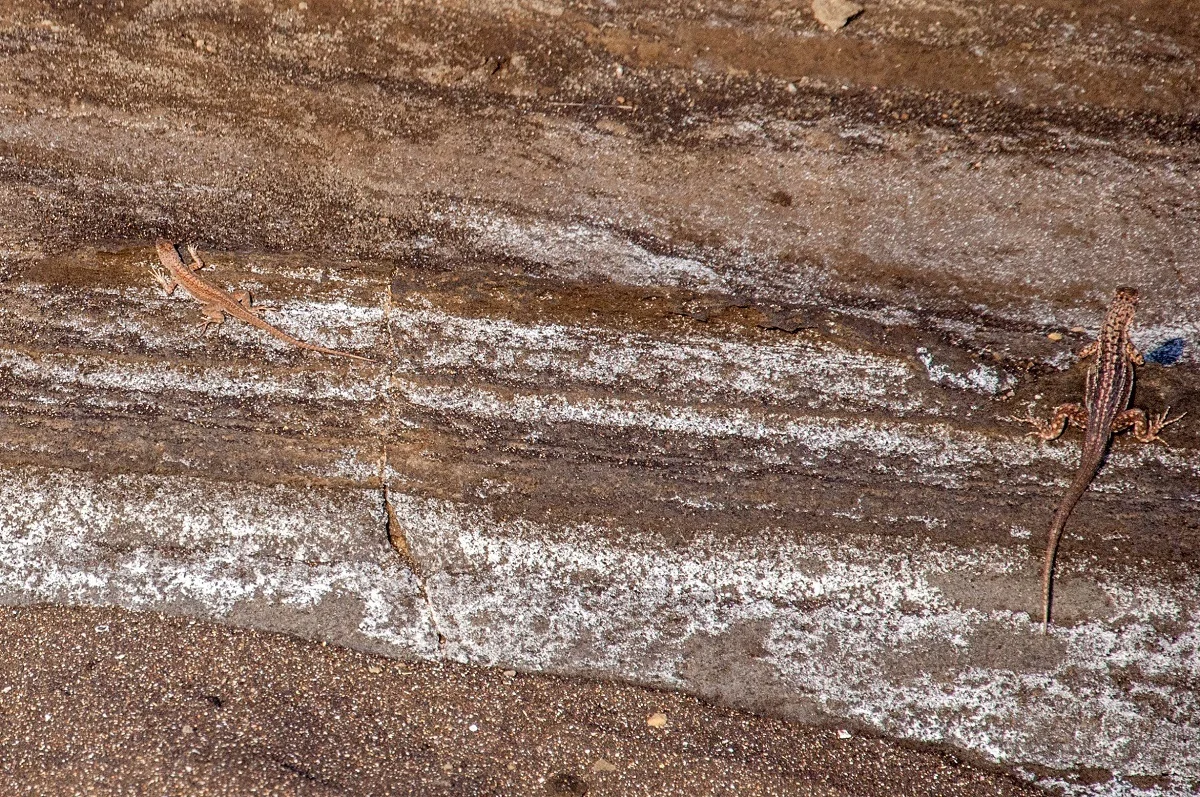
These lizards look like little mini-marine iguanas, but they are not. You’ll find them sunning on the lava, or climbing on the heads of the marine iguanas. Like other lizards they are known for dropping their tails to escape predators and are known to engage in cannibalism when food is scarce.
Galapagos Sea Lions
We were in the islands at the time when all the pups were being born. We got to see lots of real cute little sea lions, particularly on Genovesa Island. These playful creatures were found at every island stop during our trip.
There are strict rules about approaching and interacting with wildlife in the islands. However, nobody told that to the sea lions. They routinely would approach us while snorkeling, rub up against us, and even grab onto the zipper cords from our wetsuits.
Despite the population of 20,000-50,000 sea lions (Zalophus wollebaeki), they are considered a protected species. Natural predators like killer whales and sharks keep the population in check, but population has also taken a hit because of pesticides and fishing.
Galapagos Fur Seal
The endangered Galapagos fur seals (Arctocephalus galapagoensis) were nearly hunted to extinction, which has resulted in them being one of the few species that is fearful of humans. We spent an hour with the colony on Santiago Island. We found that if we were really quiet and stayed far enough away them, they would tolerate our presence.
The fur seals in the Galapagos are known for overly aggressive tendencies. However, we didn’t see any evidence of that. Most of the seals just lounged on the lava rocks near the water.
Galapagos Penguin
This penguin (Spheniscus mendiculus) is the only penguin that naturally lives north of the Equator. They are an endangered species and are very rare to see with only about 1,500 penguins in the Galapagos Islands. We were fortunate enough to spot several of them at Punta Vicente Roca on Isabela Island.
Bottlenose Dolphin
The islands are home to two resident dolphin species: the common dolphin (Delphinus delphis) and the bottlenose dolphin (Tursiops truncatus). Several other dolphin species also travel through the islands at various times of the year. They can be found in abundant numbers throughout all of the islands and even while sailing between them (riding the bow waves).
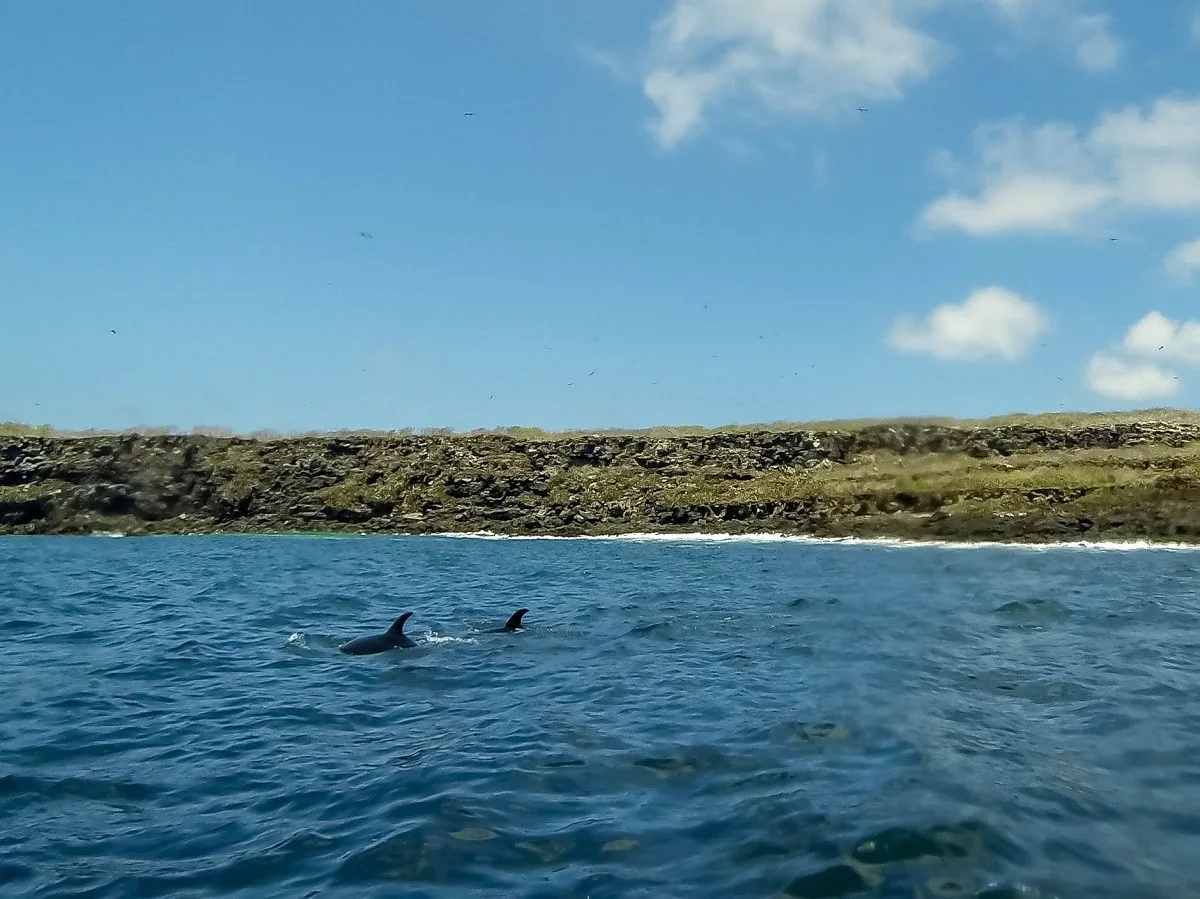
There was a large bottlenose dolphin pod swimming around the volcano caldera on Genovesa Island (or Tower Island). We jumped out of the zodiaks into the water and able to swim for a few minutes with these majestic creatures in the wild. They didn’t come extremely close, but it was still close enough to make an amazing memory and was one of the highlights of the trip.
Golden Rays
The golden rays (Rhinoptera steindachneri), or sometimes called the golden cownose ray or Pacific cownose ray, are a sub-species of eagle rays that gather in schools in coastal lagoons. You’ll see them swimming along in tight formation as a large group just inches under the surface of the water.
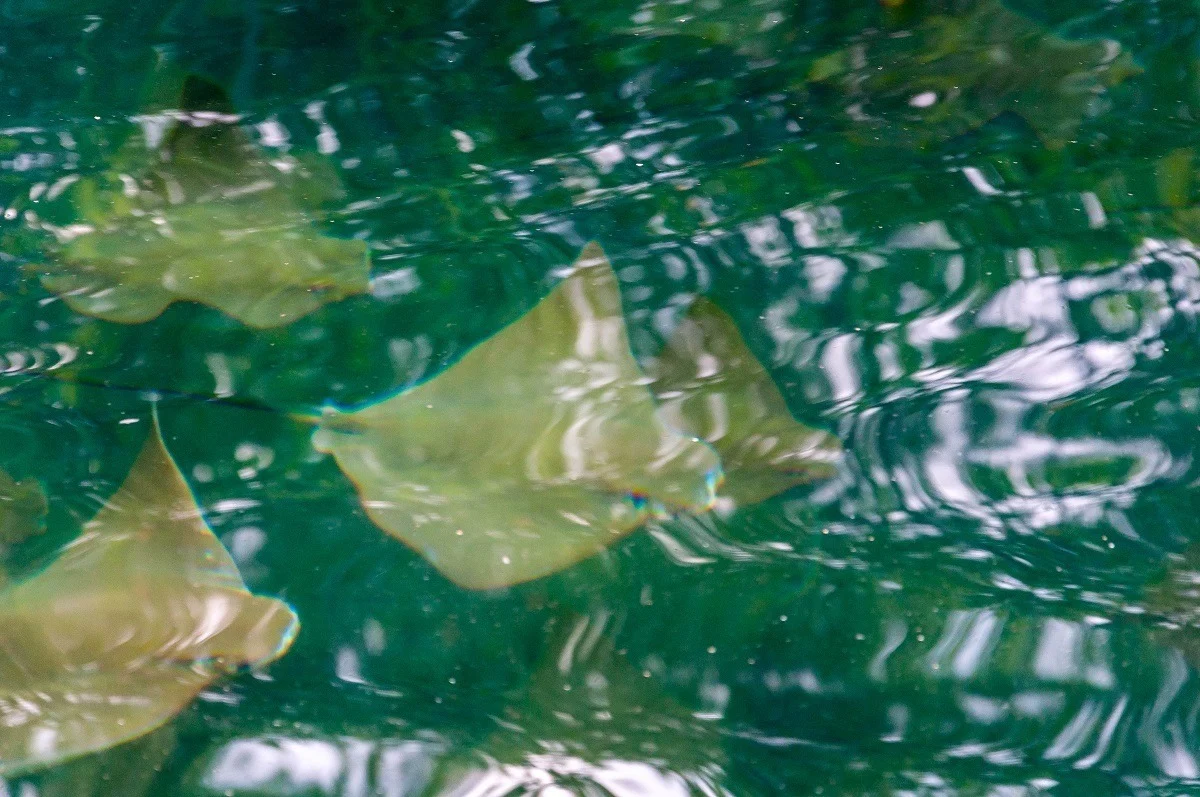
We found huge schools of these beautiful rays in the lagoons off Isabela Island’s Elizabeth Bay. If we turned the motor off on the zodiaks, the rays would get up close to the boat, otherwise, they kept their distance.
Galapagos Diamond Stingray
In the sandy bays around the islands, the diamond stingray (Dasyatis dipterura) can be frequently seen waiting to catch its prey. The diamond stingray is being aggressively hunted in some Central and South American countries, but the population here remains strong.
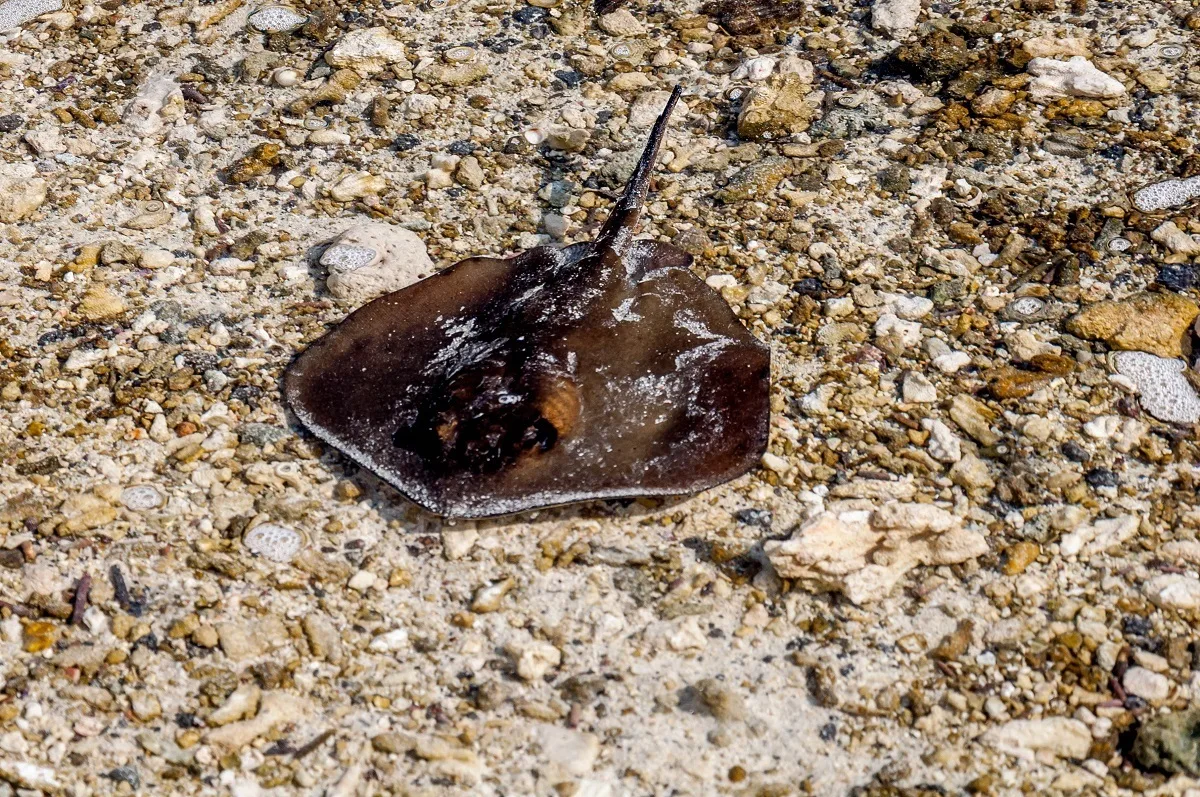
While the stingers can be dangerous if they feel threatened, they are completely safe for people to be around. We saw them in shallow sandy bays as well as while we were snorkeling around the islands.
The Sally Lightfoot Crab
Our pick for the most colorful animal in the Galapagos Islands is the Sally Lightfoot Crab (Grapsus grapsus). These bright red and yellow crabs crawl over the black lava rocks, which makes for great photos. They are also probably the most common Galapagos animal as we found these crabs on nearly every island we visited.
These bright red rock crabs are natural scavengers and feed on any organic debris that finds its way to the shore. From dead animals to picking bugs off sleeping marine iguanas, these crabs will eat it all. At each beach landing, we could see them at work.
Pacific Seahorse
The Pacific seahorse (Hippocampus ingens) may be one of the smallest animals in the islands. Despite sometimes being called the giant seahorse, these little creatures are tiny, growing to 4-8 inches in length. Populations of Pacific seahorses are being aggressively harvested for Chinese medicines, but the species is still thriving here.
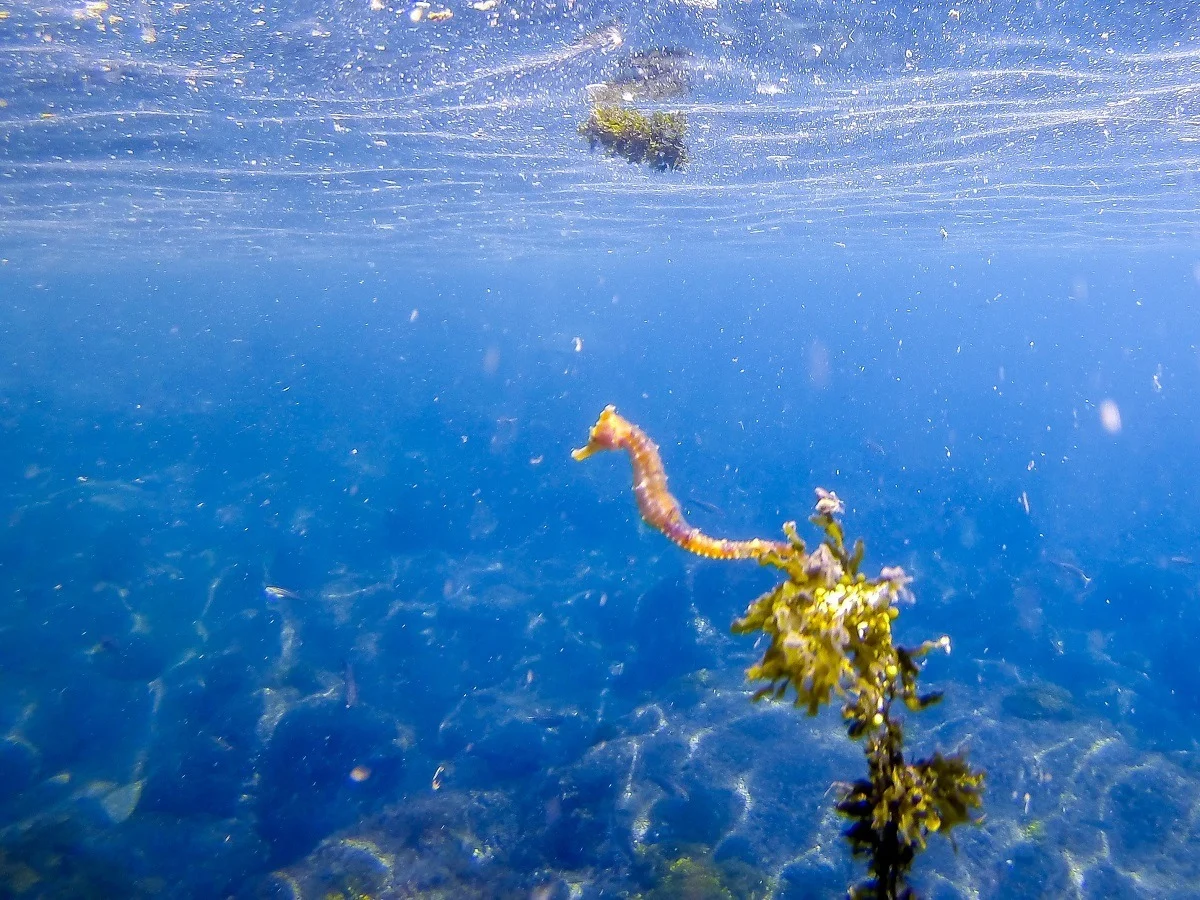
We found large populations at Punta Vicente Roca while snorkeling. We were so focused at looking at the large green sea turtles that we almost missed the tiny little seahorses right in front of our snorkel masks.
Galapagos Flightless Cormorants
The flightless cormorant (Phalacrocorax harrisi) has evolved by losing the ability to fly. The bird instead swims on the surface like a duck, dives under the water to catch fish and then comes up to waddle onto land.
Even though they don’t fly, the Galapagos cormorants still curiously spreads its stubby wings to dry them in the sun (just like other cormorants) when it comes on land. Once considered an endangered species, we saw lots of them on Fernandina Island and were extremely impressed with how quickly these birds could dive under the water.
Frigatebirds
The Magnificent Frigatebird (Fregata magnificens) and the Great Frigatebird (Fregata minor) make their homes in the islands. With their shining, iridescent feathers and red bellies, they’re a sight to behold.
We were fortunate to visit the Galapagos during mating season, so we got to see the mating ritual that frigatebirds are most known for. The males perch themselves on bushes and tree branches, inflate their bright red gular sac and make a loud warbling sound designed to attract the females that are flying overhead. It is one of the most impressive mating displays in the natural world. We saw the frigatebirds on a number of islands, but the most impressive displays were on Genovesa Island.
Blue-Footed Booby
The butt of many jokes, the blue-footed booby (Sula nebouxii) is named for its bright blue feet. We were here during mating season, but didn’t get the see the blue-footed booby dance. We did witness “sky-pointing” where the male points up into the sky to attract females. While the booby is located throughout the islands, we saw the largest concentration on Isabela Island.
Nazca Booby
The mating dance for the Nazca booby (Sula granti) involves the male and the female bobbing their heads beside each other. From a distance, the display creates a heart shape between the two birds. Maybe this is where “love birds” comes from. We saw Nazca bobbies on almost every island, but they were most populous on Genovesa Island.
Red-Footed Booby
Similar to other boobies, we noticed that the red-footed boobies (Sula sula) were a bit clumsy. We saw one come in on landing and go tumbling on the lava landscape of Genovesa Island.
Short-eared owl
The Galapagos Short-eared owl (Asio flammeus galapagoensis) are curious looking birds that are endemic to the islands. They have tufts of feathers that protrude and look like ears when the owl feels threatened or is behaving aggressively. They are also very elusive and difficult to spot.
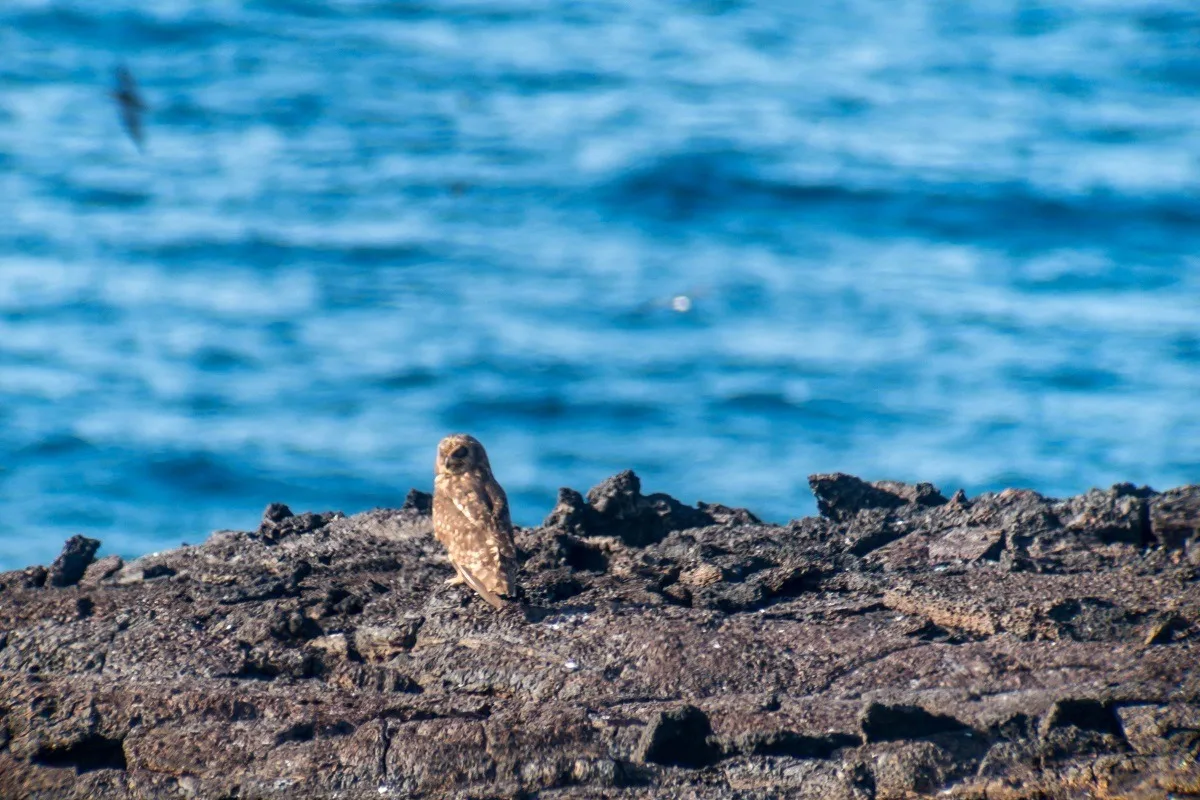
We had luck seeing this one on Genovesa Island (or Tower Island) as it waited by a crevice in the lava to catch a storm petrel that had burrowed in there. We were a long way away and this photo was actually taken through a small telescope.
Galapagos Hawk
The hawk (Buteo galapagoensis) is an endemic bird species to the islands. These apex predators are voracious hunters and can either be seen stalking their prey or catching them in the act of the kill. And they don’t do much else.
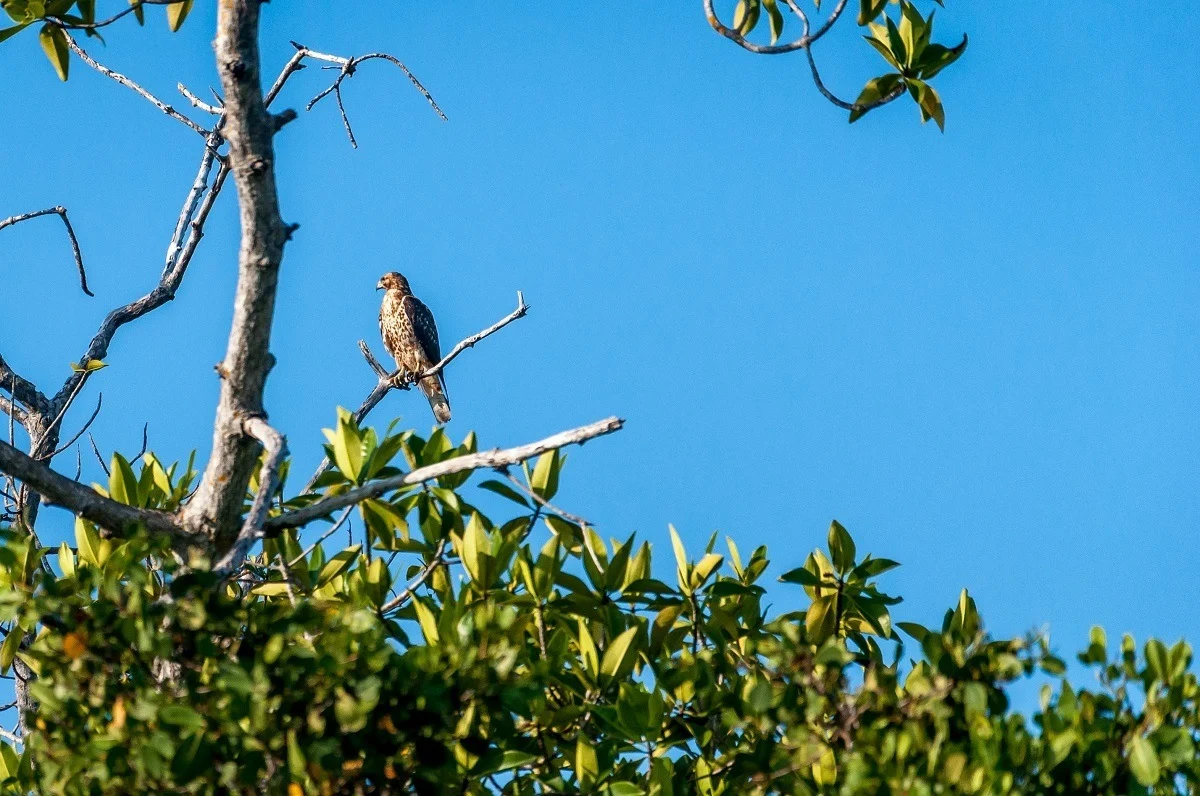
We had expected sightings of these birds to be quite rare, however, we were pleasantly surprised how frequently we encountered them. They could usually be found in trees or up on rock outcroppings or any other place with a good view scouting for prey.
Swallow-tailed Gull
The swallow-tailed gull (Creagrus furcatus) is the only fully nocturnal seabird in the world. With its distinctive red eye ring, these birds prey on small fish which eat plankton on the ocean’s surface at night.
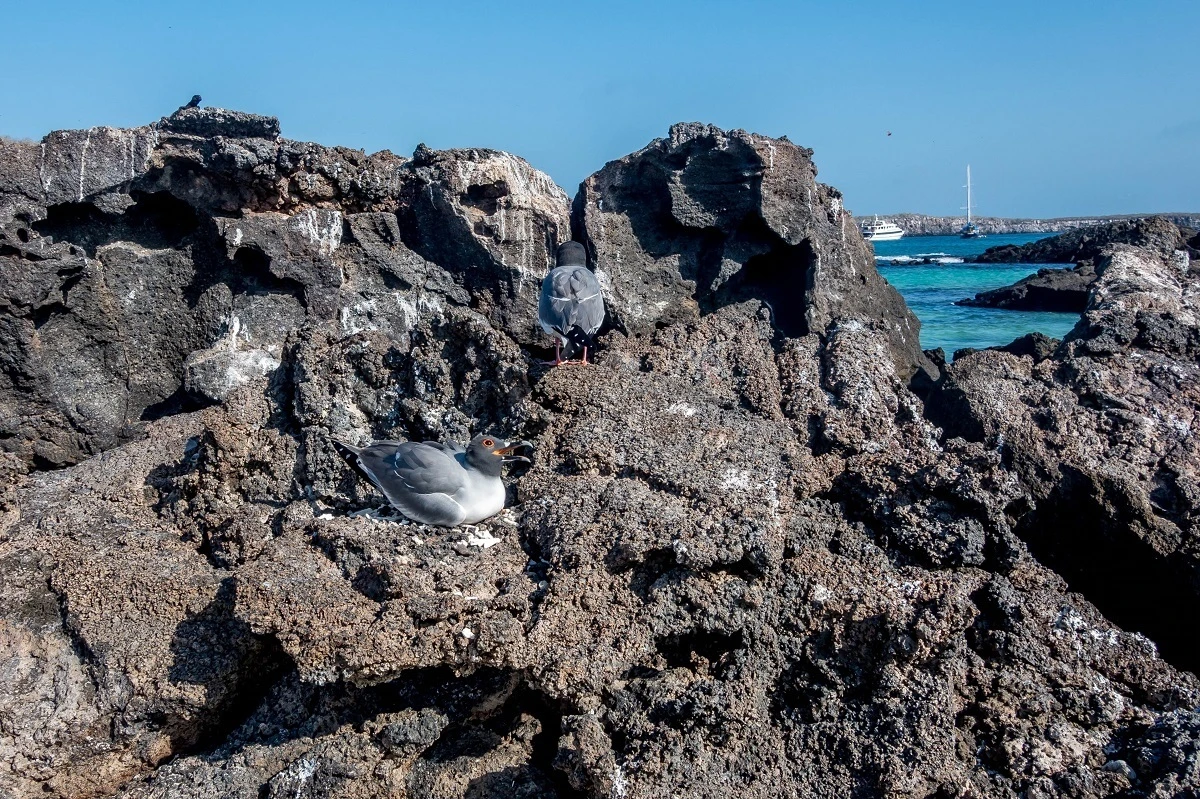
While these birds are supposed to be nocturnal, we say plenty of them during the day, mostly on the lava sea cliffs where they make their nests.
Lava Heron
The Galapagos lava heron (Butorides sundevalli), or Galapagos heron, perch themselves on the sea cliffs stalking their prey before plunging into the ocean. These birds are endemic to the Galapagos Islands and feed primarily on small fish and crabs.
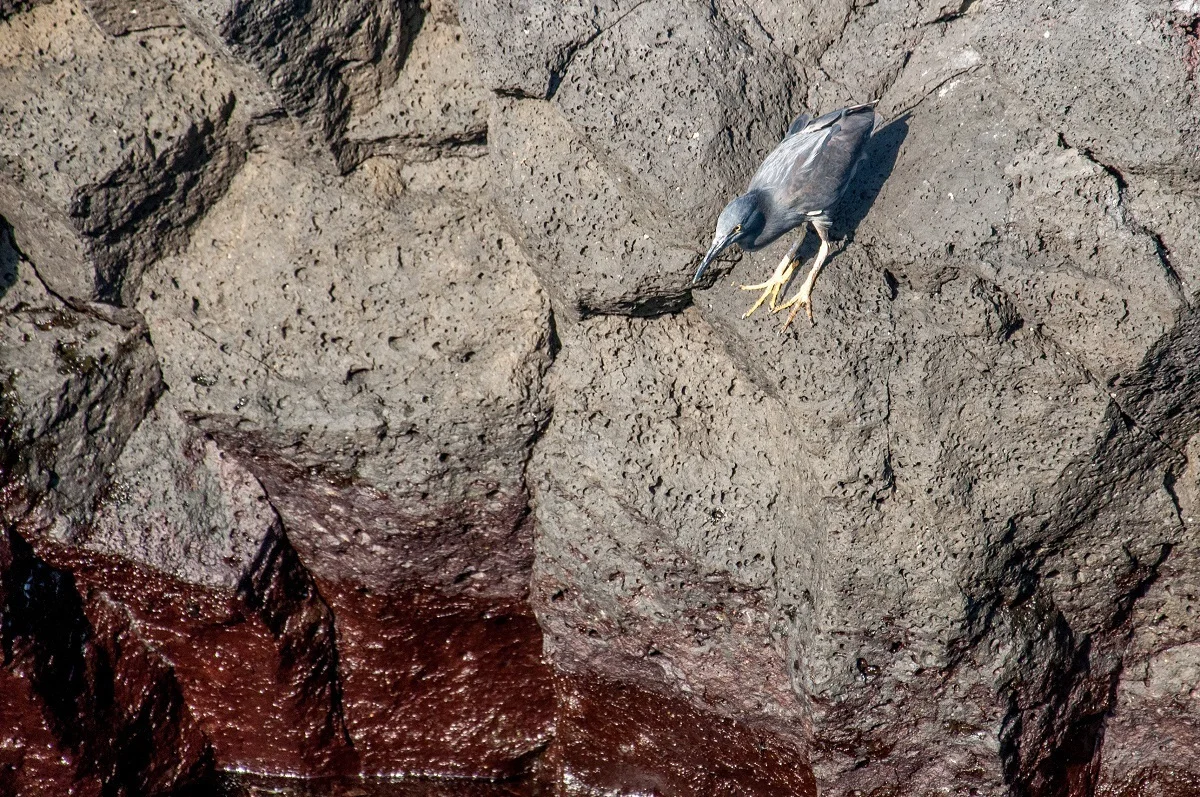
While we were at the fur seal colony on Santiago Island, we watched this lava heron spend over 10 minutes stalking a very specific fish before launching into the water.
Brown Pelican
The sub-species of the Galapagos brown pelican (Pelecanus occidentalis) is believed to be endemic to the islands. The brown pelican here is one of few pelican bird species that actively hunts by diving from the sky into the water to catch fish. We witnessed a spectacular display of pelican dive-bombing off Baltra Island.
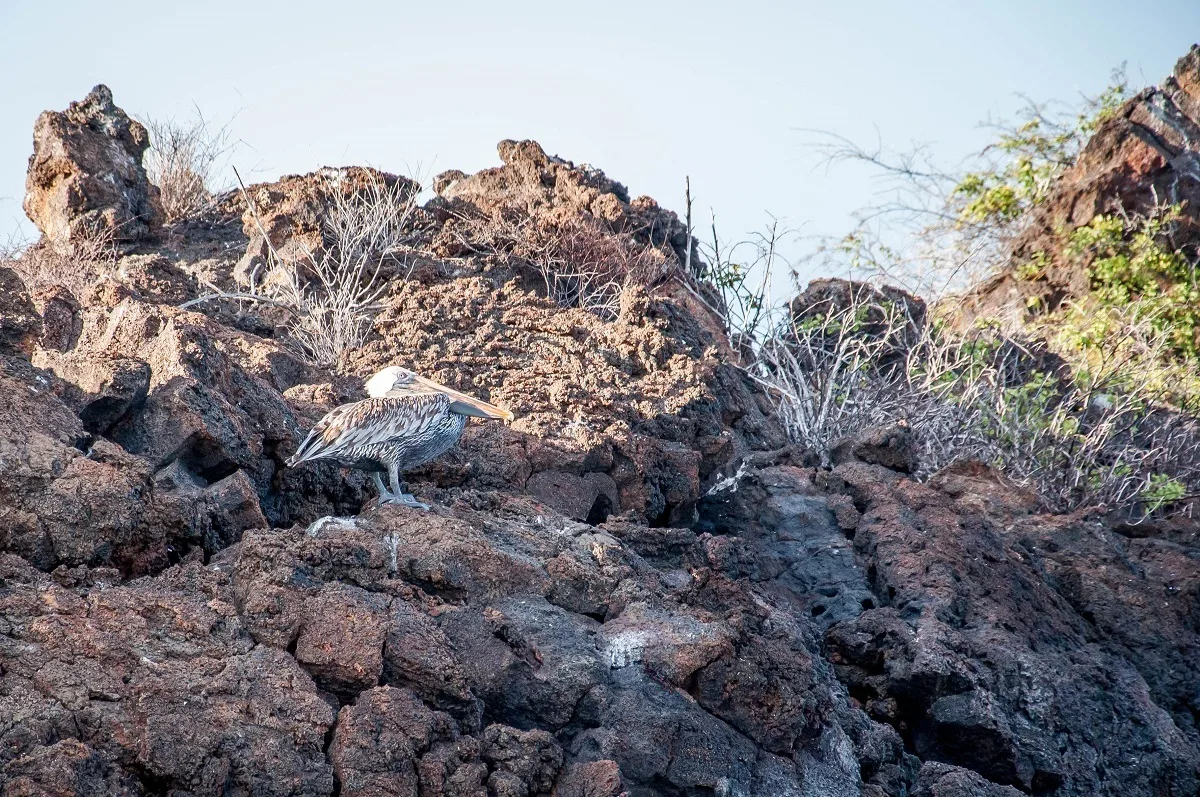
Great Blue Heron
The Galapagos great blue heron (Ardea herodias) may be our favorite bird in the world. They are beautiful, majestic, and are great to photograph. We found this beautiful example walking the dunes on Baltra Island.
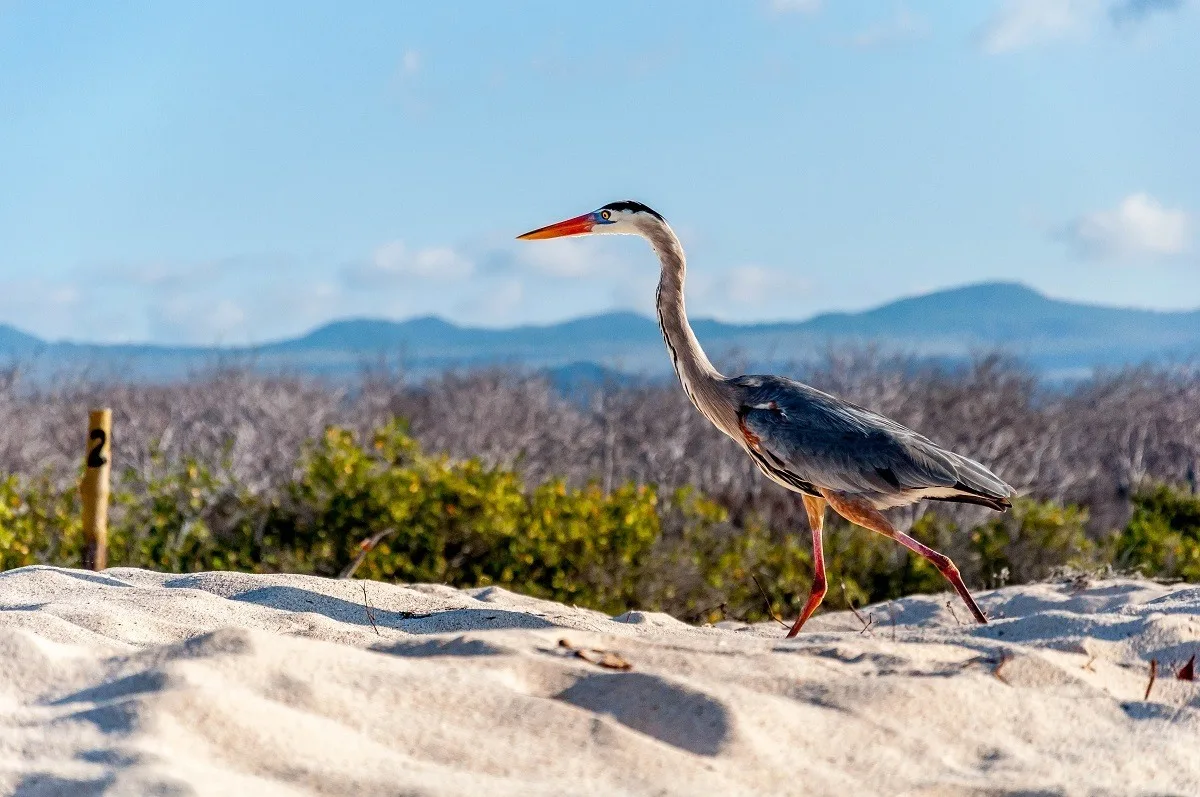
Galapagos Yellow-Crowned Night Heron
The yellow-crowned night heron (Nyctanassa violacea) is one of the two species of night herons in the world. You can usually found them in the shade or lurking in the shadows, even when hunting.
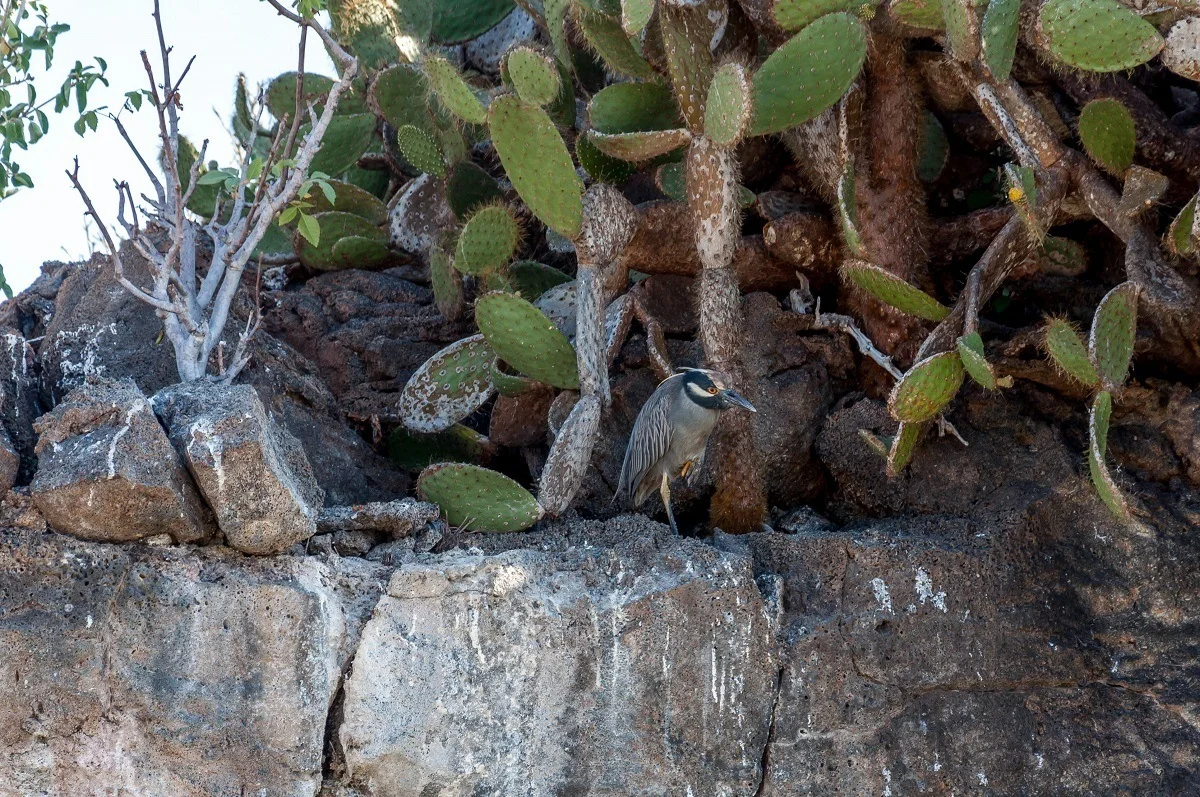
Galapagos Flamingo
The Galapagos flamingo (Phoenicopterus Ruber) is often cited as one of the most elusive Galapagos bird species and is the smallest of the known flamingo species. They are also one of the few animal species that takes notice of human presence. However, that was not our experience. We found the flamingos to be plentiful and were fortunate to see them several times on the trip, especially on Santa Cruz Island.
Darwin’s Finches
And finally, no recount of the animals of the Galapagos would be complete without the finches. The Galapagos finches, or Darwin’s Finches (Geospizinae), are a grouping of more than a dozen different birds (experts debate on whether the number is 13 or 14).
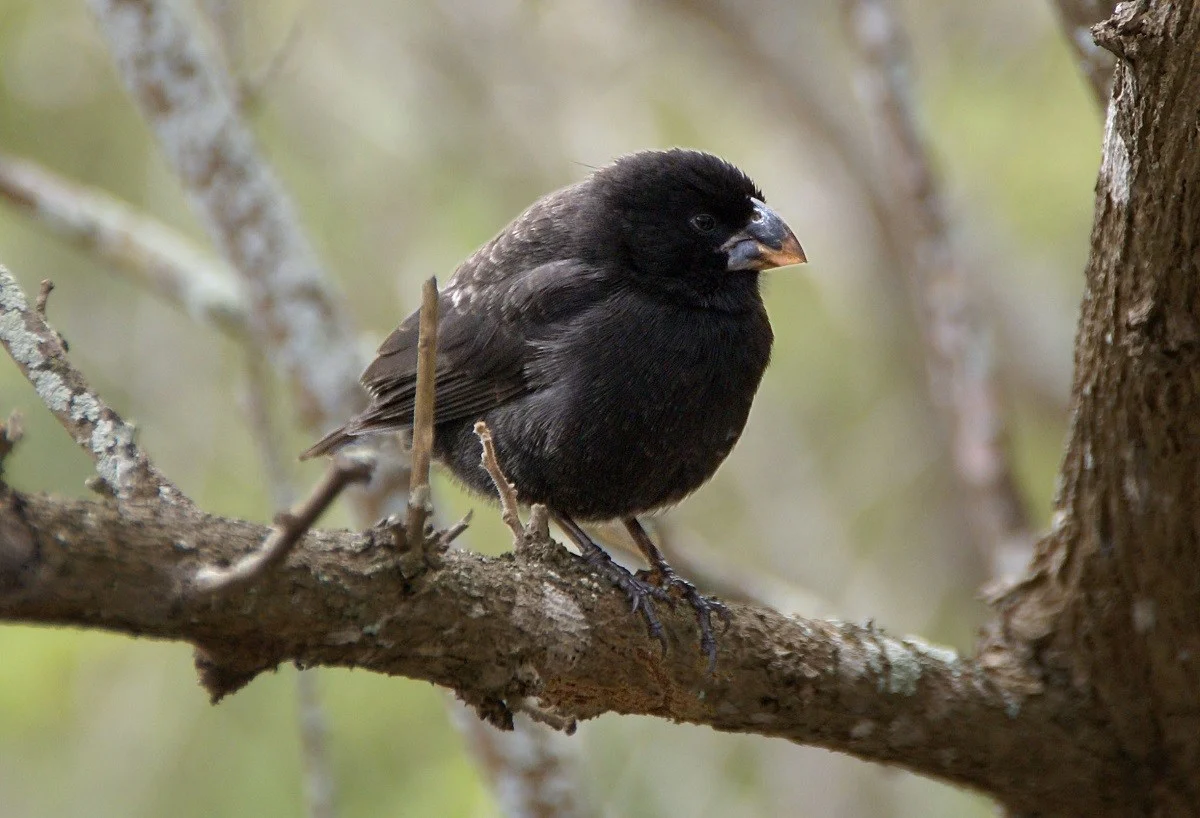
After his voyage, Charles Darwin returned to England to study his specimens. While looking at the birds, he noticed that all of the finches seemed to be related, despite having very different beak structures. He quickly recognized the birds had all evolved from a common ancestor, but had developed beaks for specialized tasks. This discovery helped fuel his evolutionary theories.
“I never dreamed that islands about 50 or 60 miles apart, and most of them in sight of each other, formed of precisely the same rocks, placed under a quite similar climate, rising to a nearly equal height, would have been differently tenanted; but we shall soon see that this is the case. It is the fate of most voyagers, no sooner to discover what is most interesting in any locality, than they are hurried from it; but I ought, perhaps, to be thankful that I obtained sufficient materials to establish this most remarkable fact in the distribution of organic beings.”
– Charles Darwin
Lance Longwell is a travel writer and photographer who has published Travel Addicts since 2008, making it one of the oldest travel blogs. He is a life-long traveler, having visited all 50 of the United States by the time he graduated high school. Lance has continued his adventures by visiting 70 countries on 5 continents – all in search of the world’s perfect sausage. He’s a passionate foodie and enjoys hot springs and cultural oddities. When he’s not traveling (or writing about travel), you’ll find him photographing his hometown of Philadelphia.

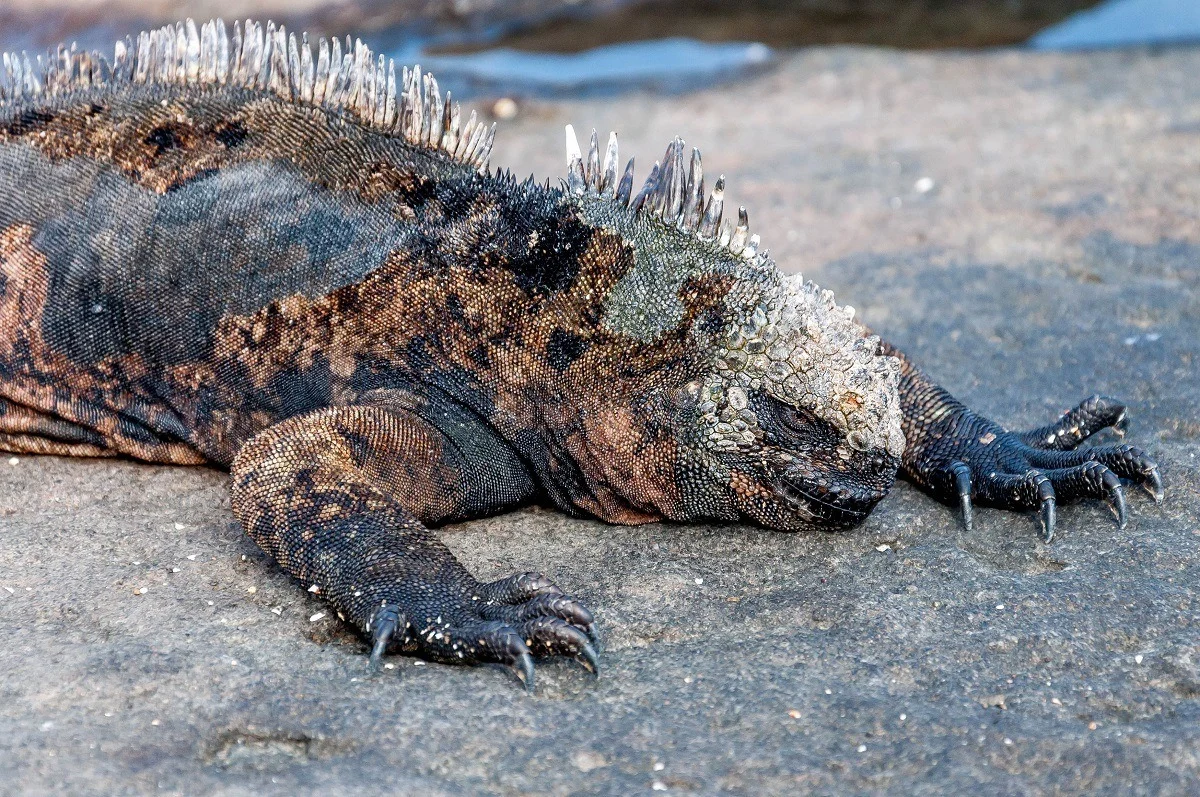
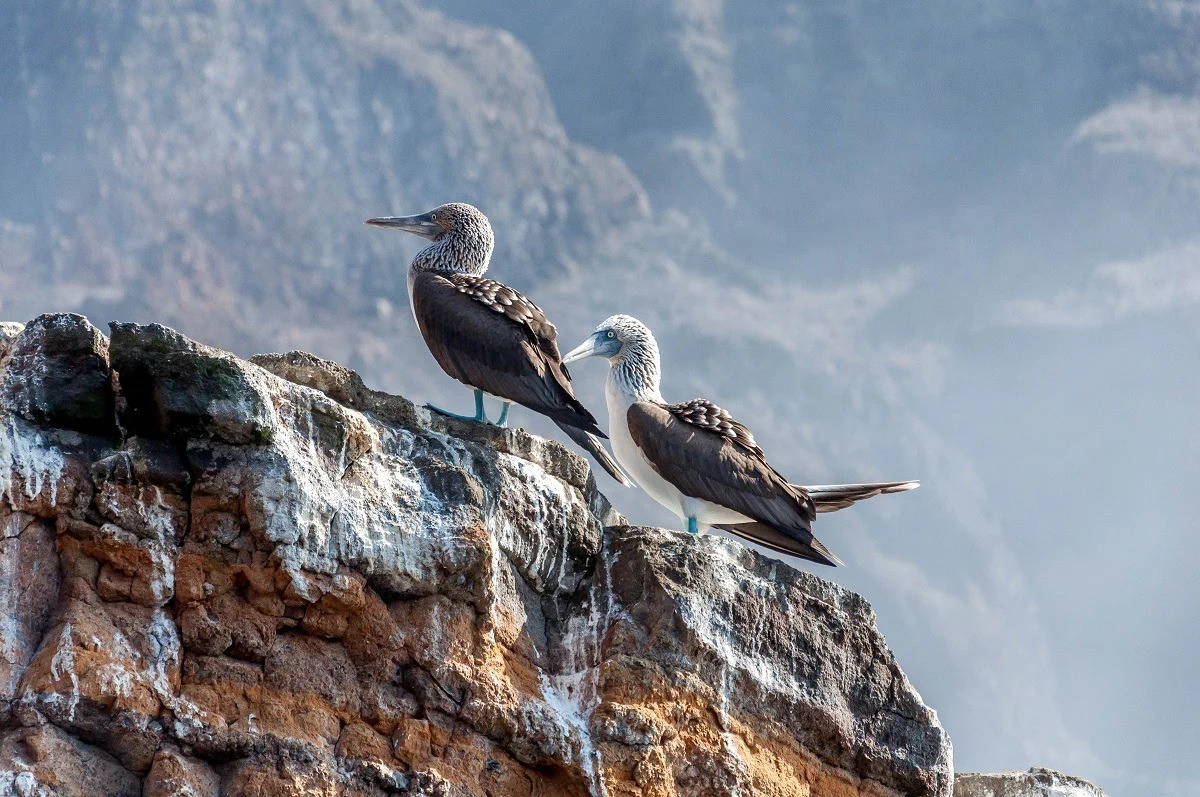
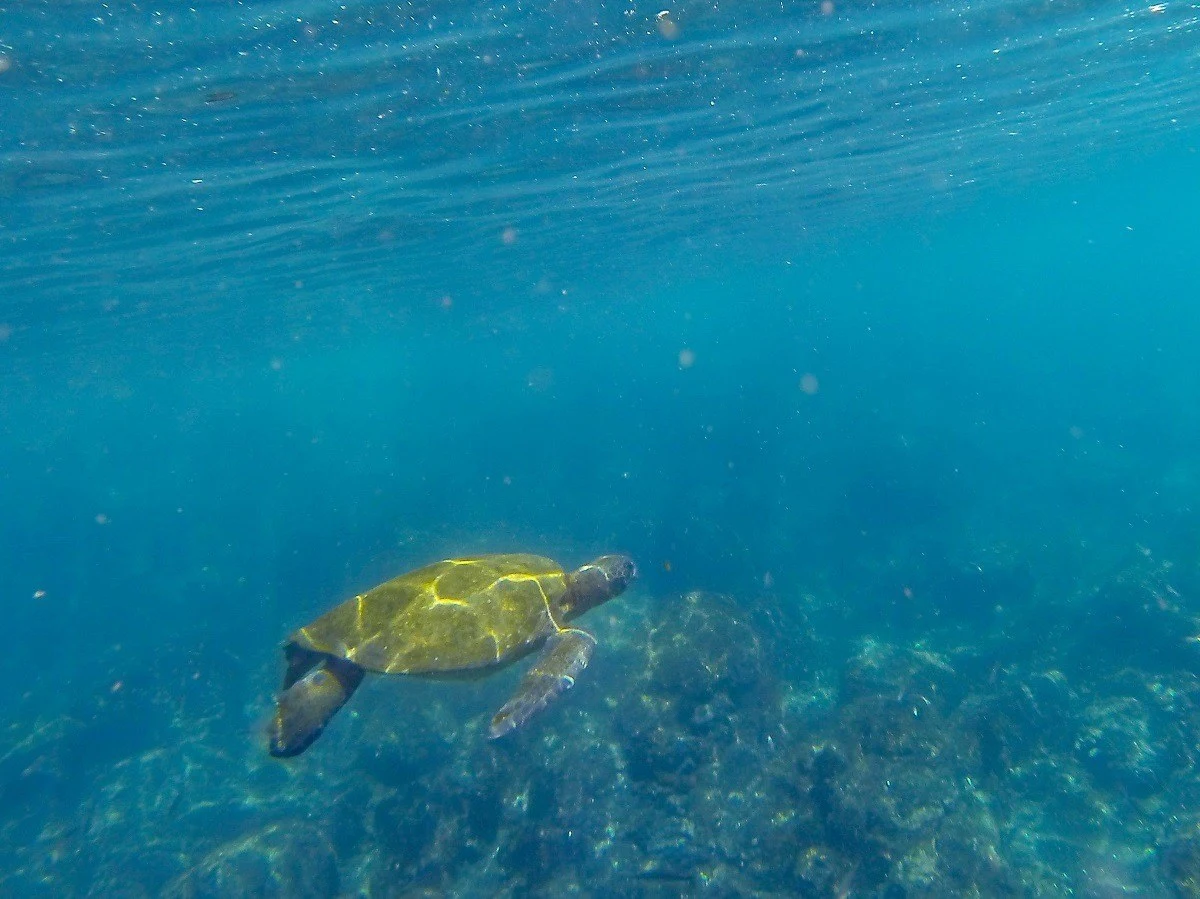
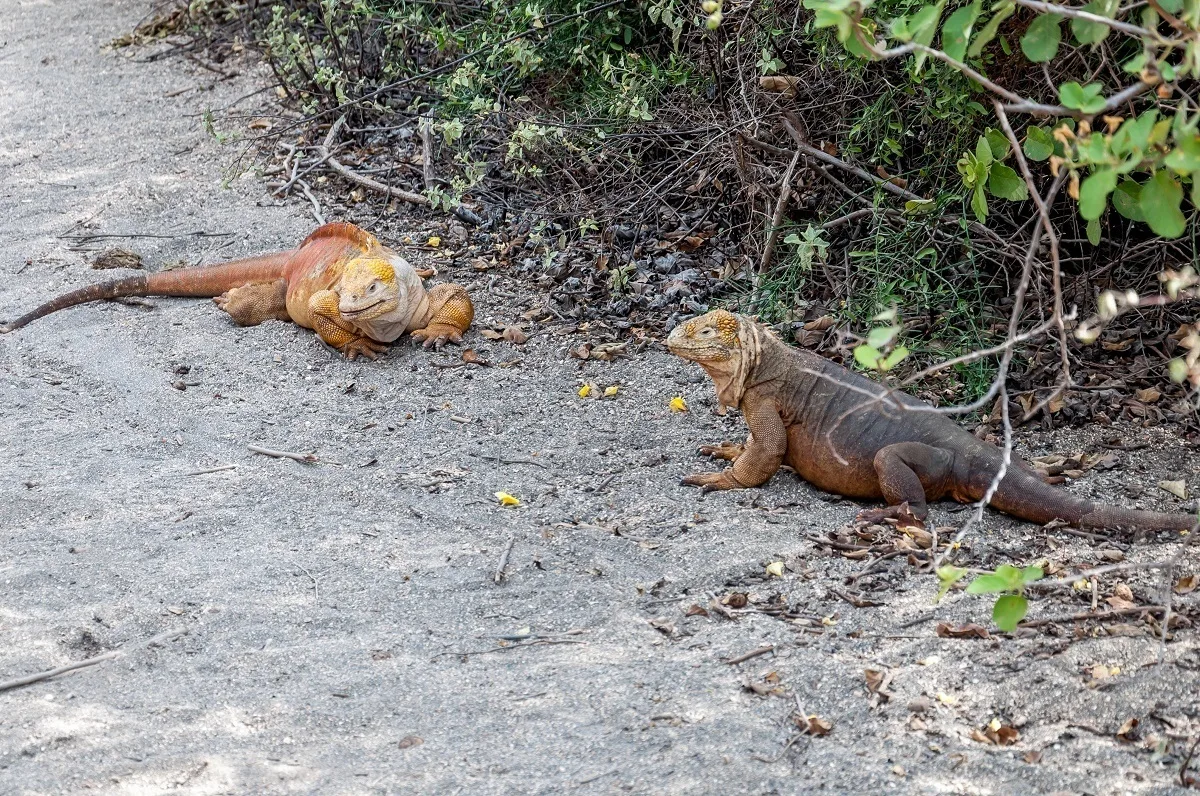
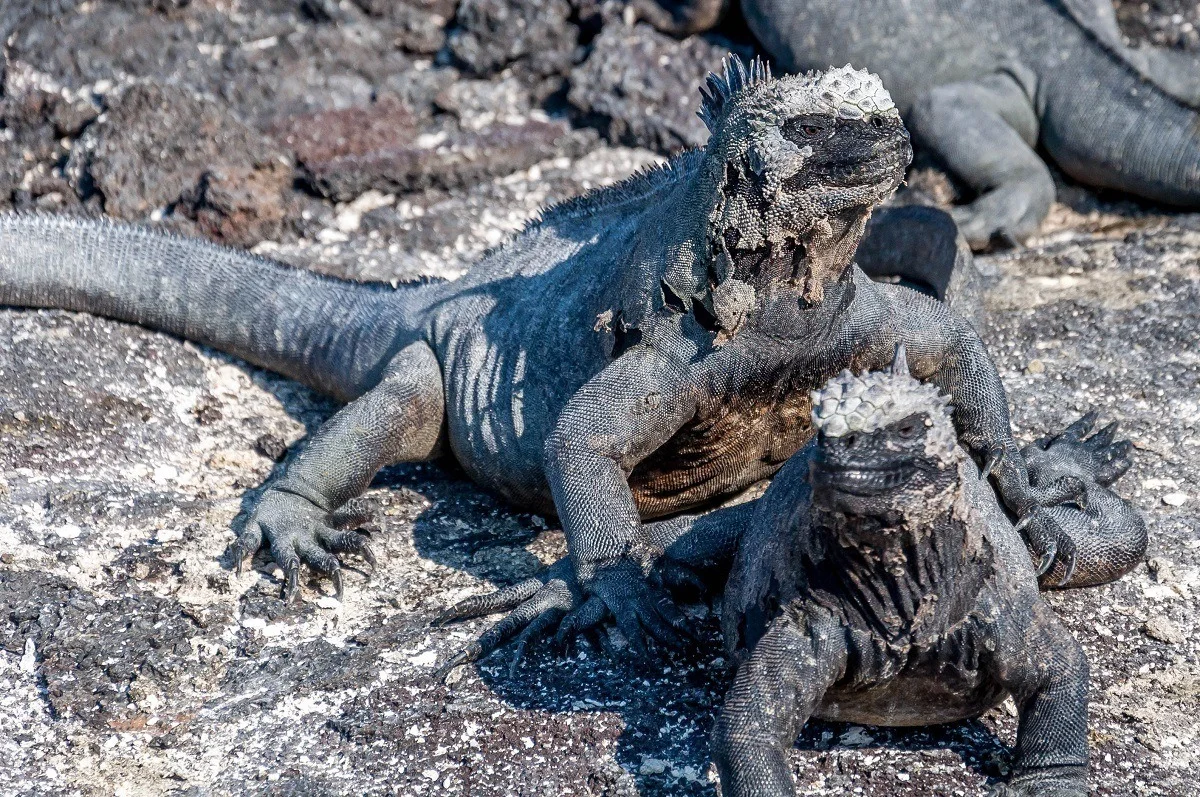
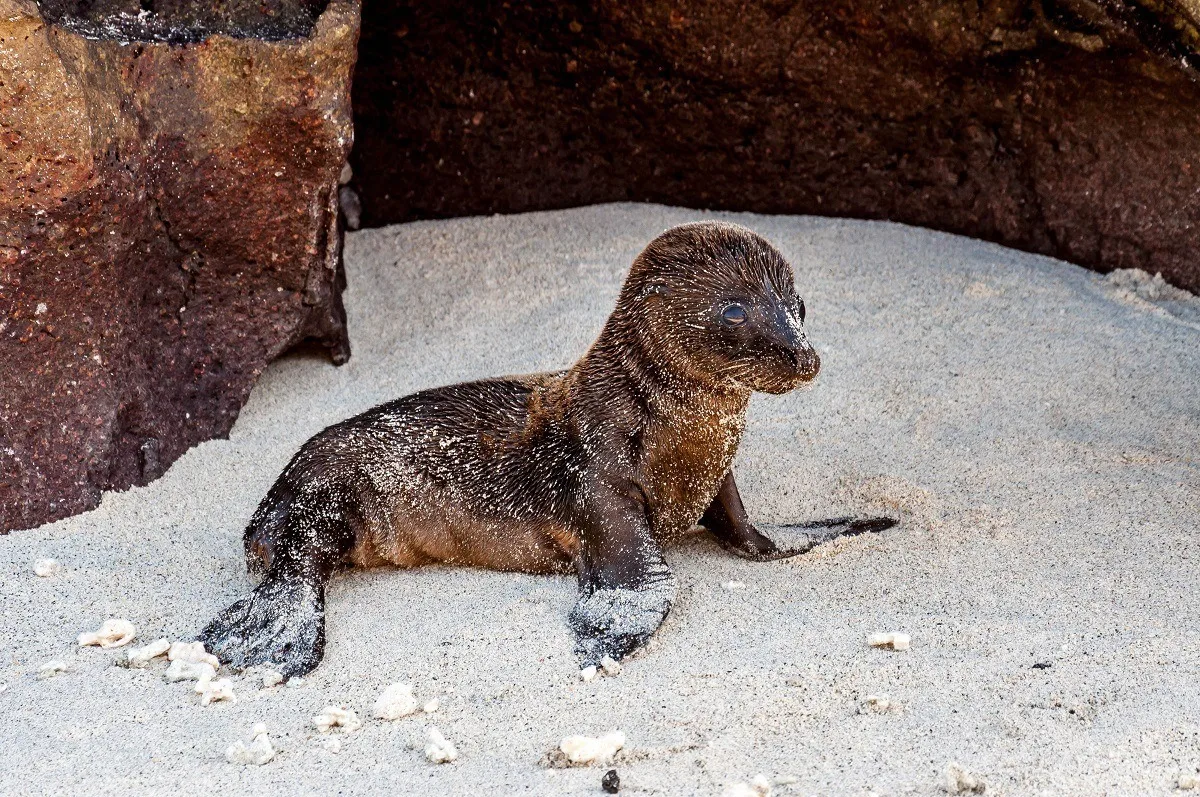
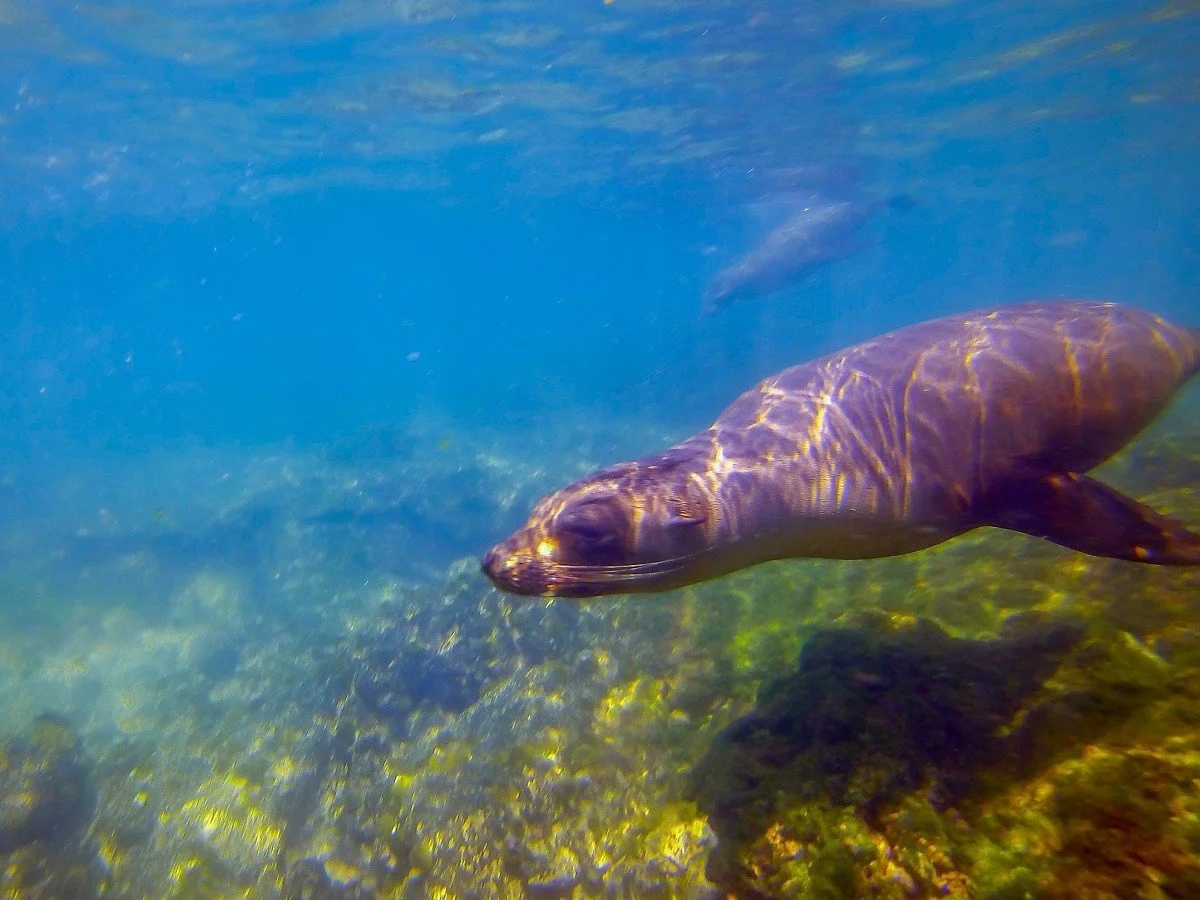
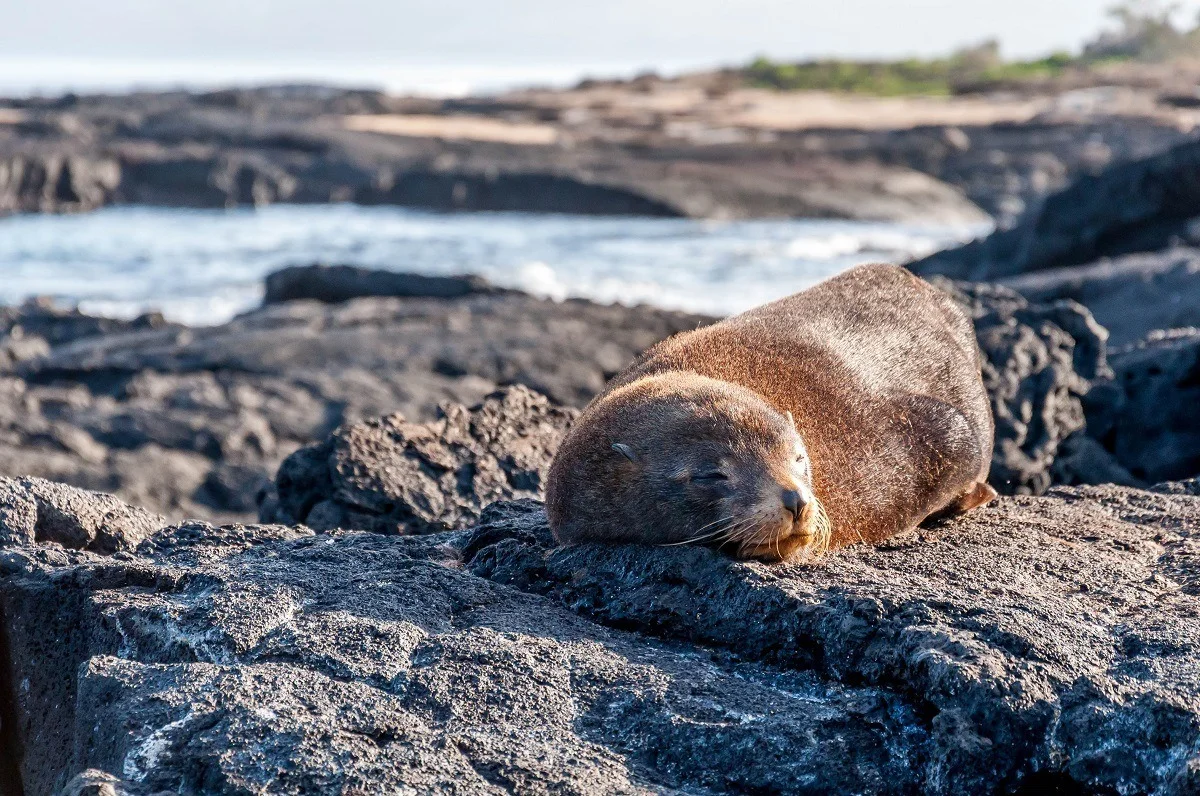
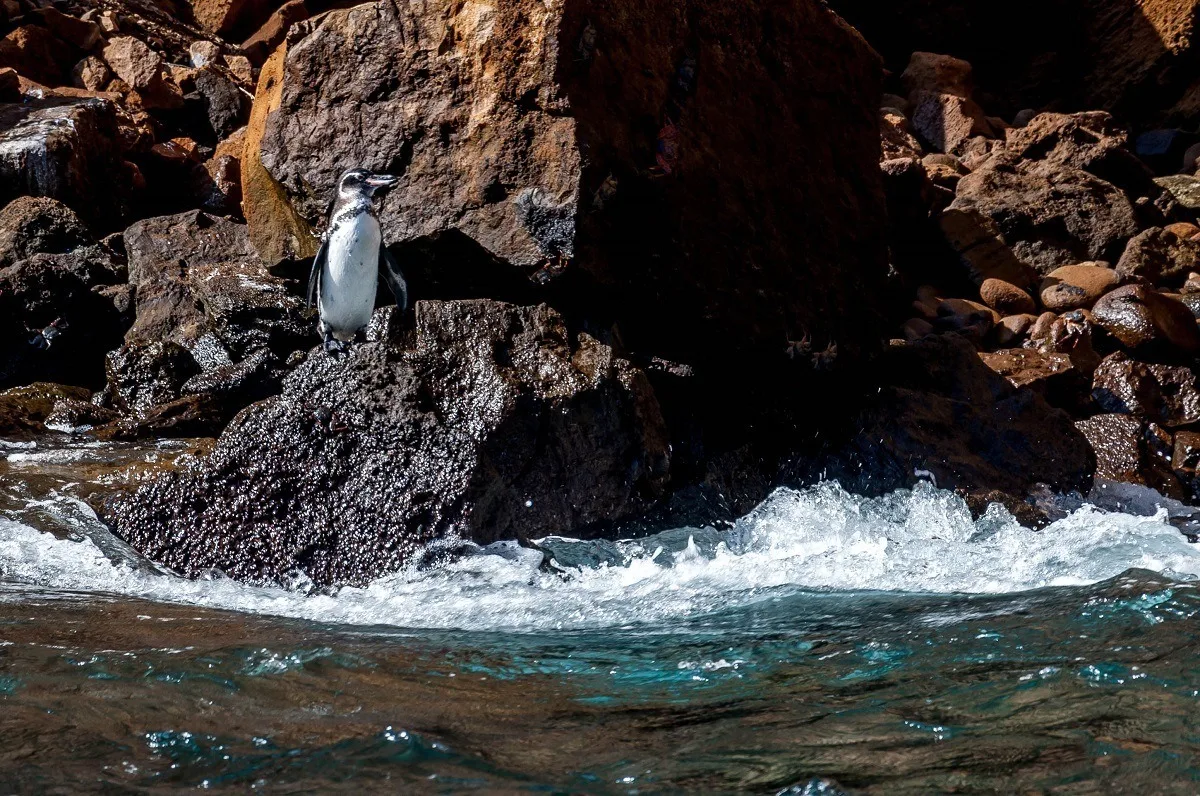
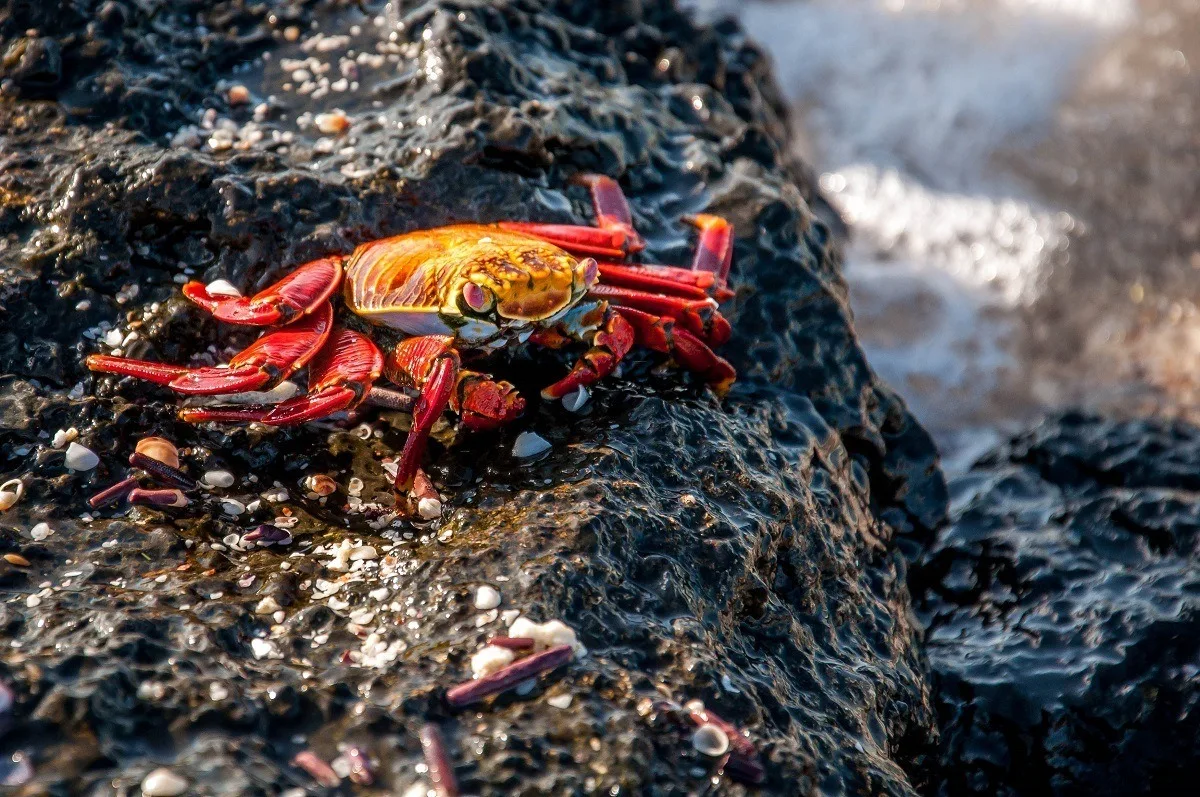
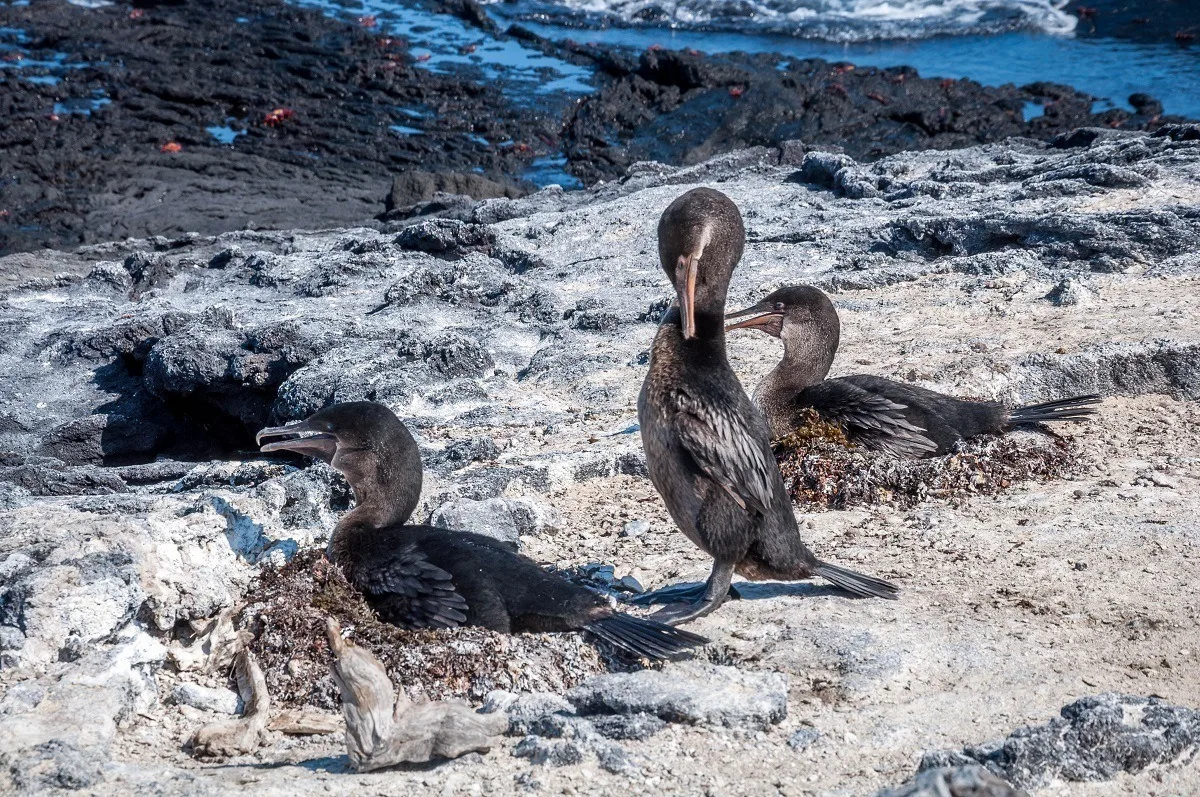
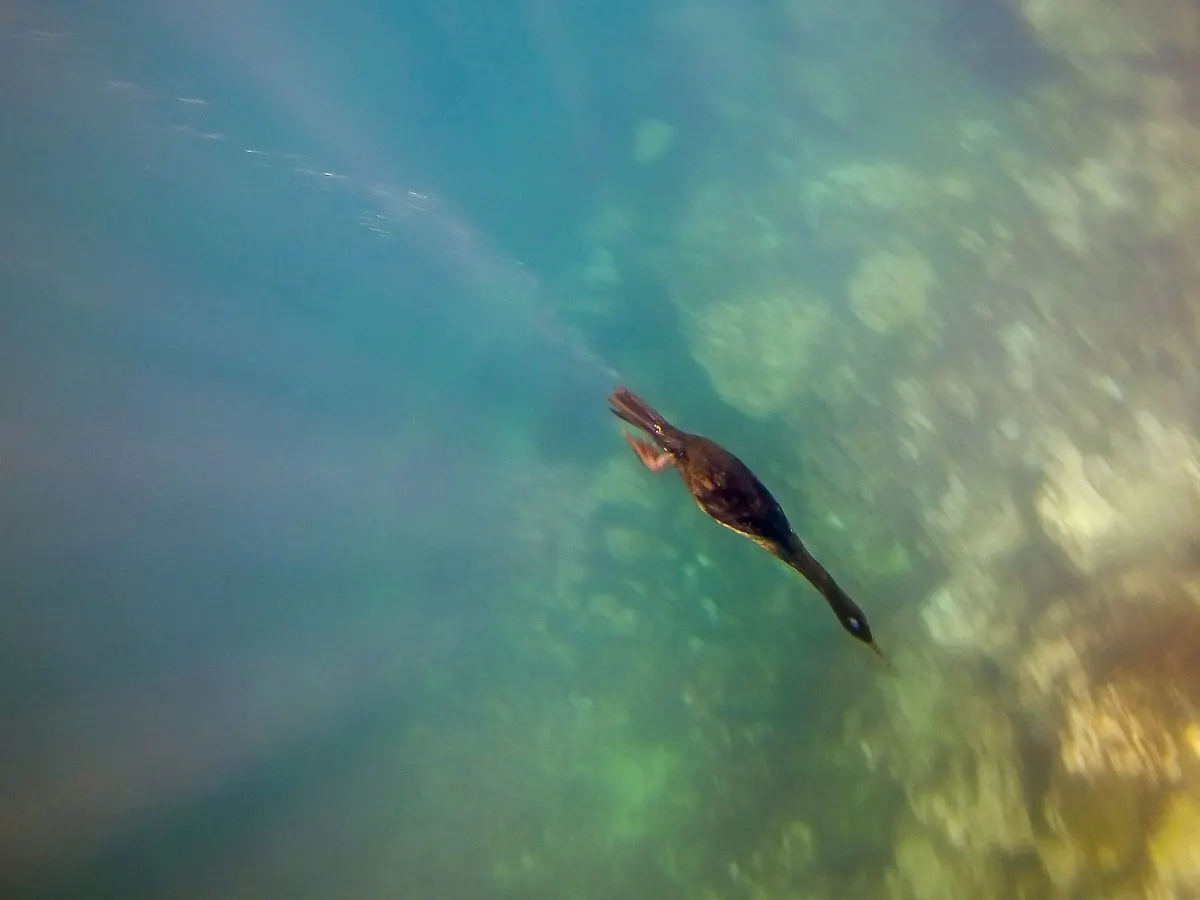
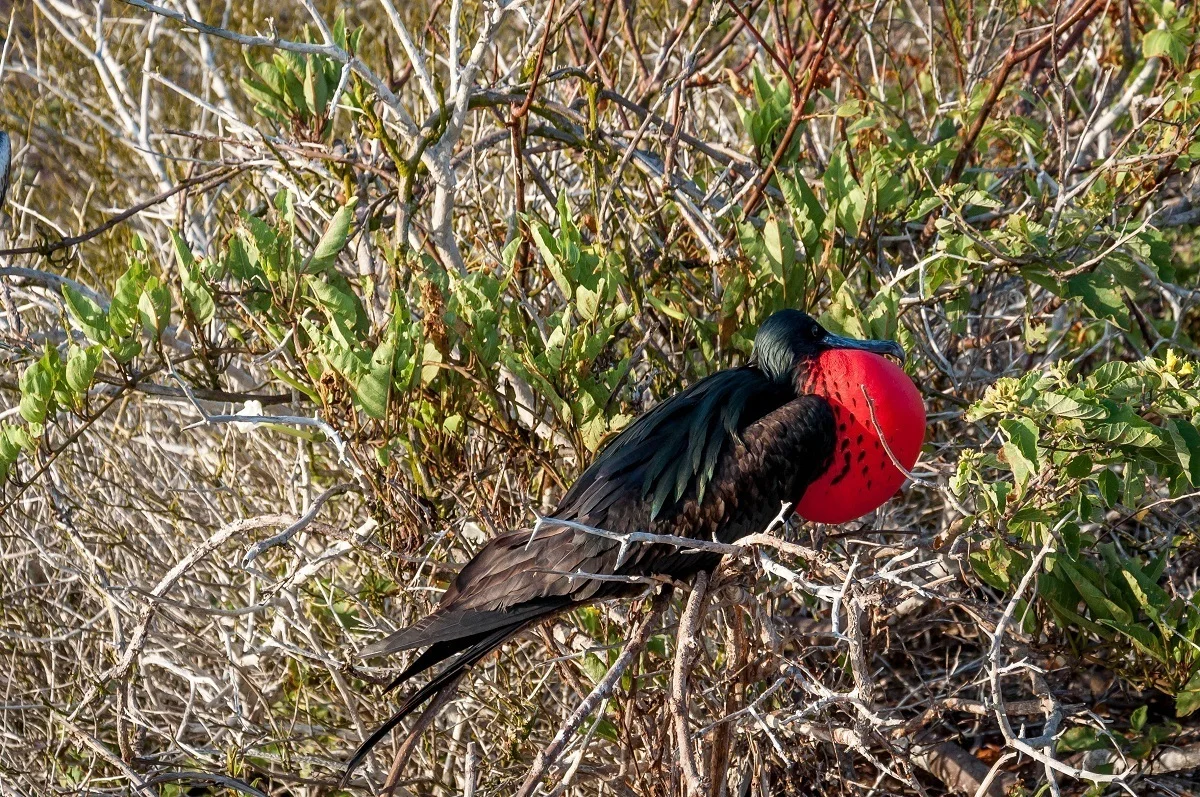
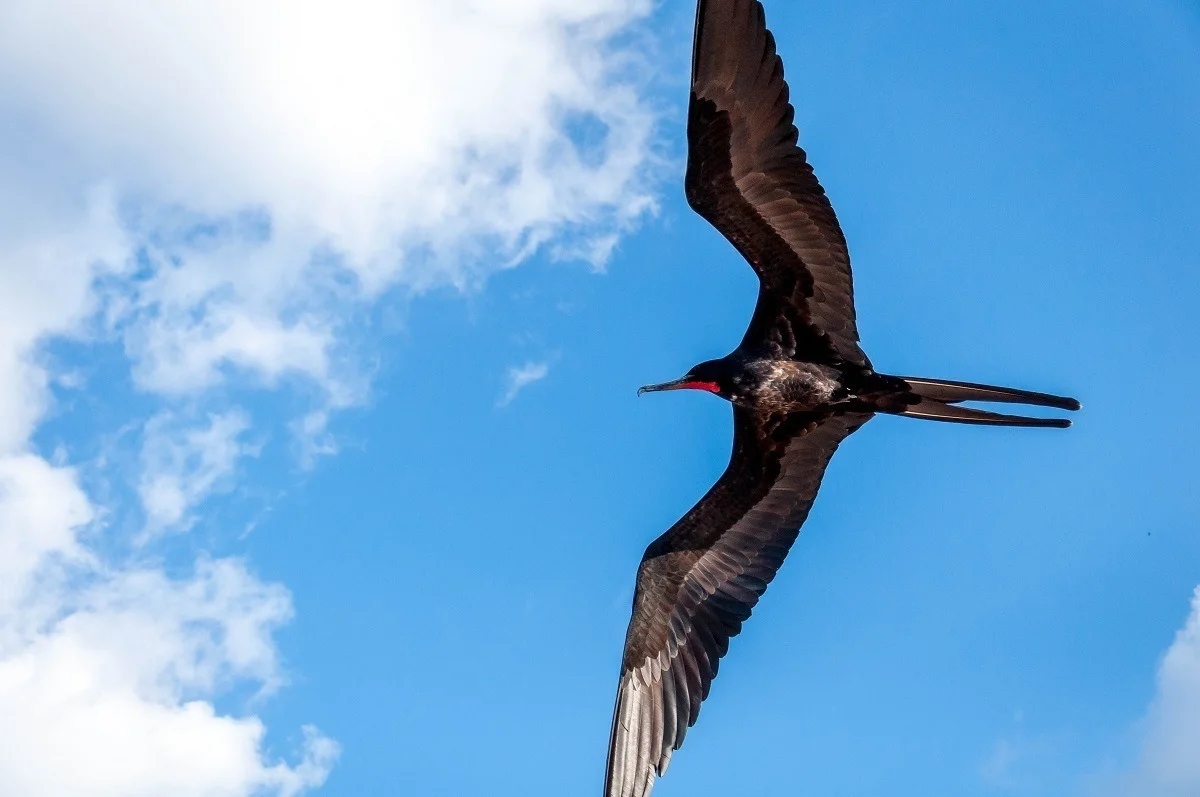
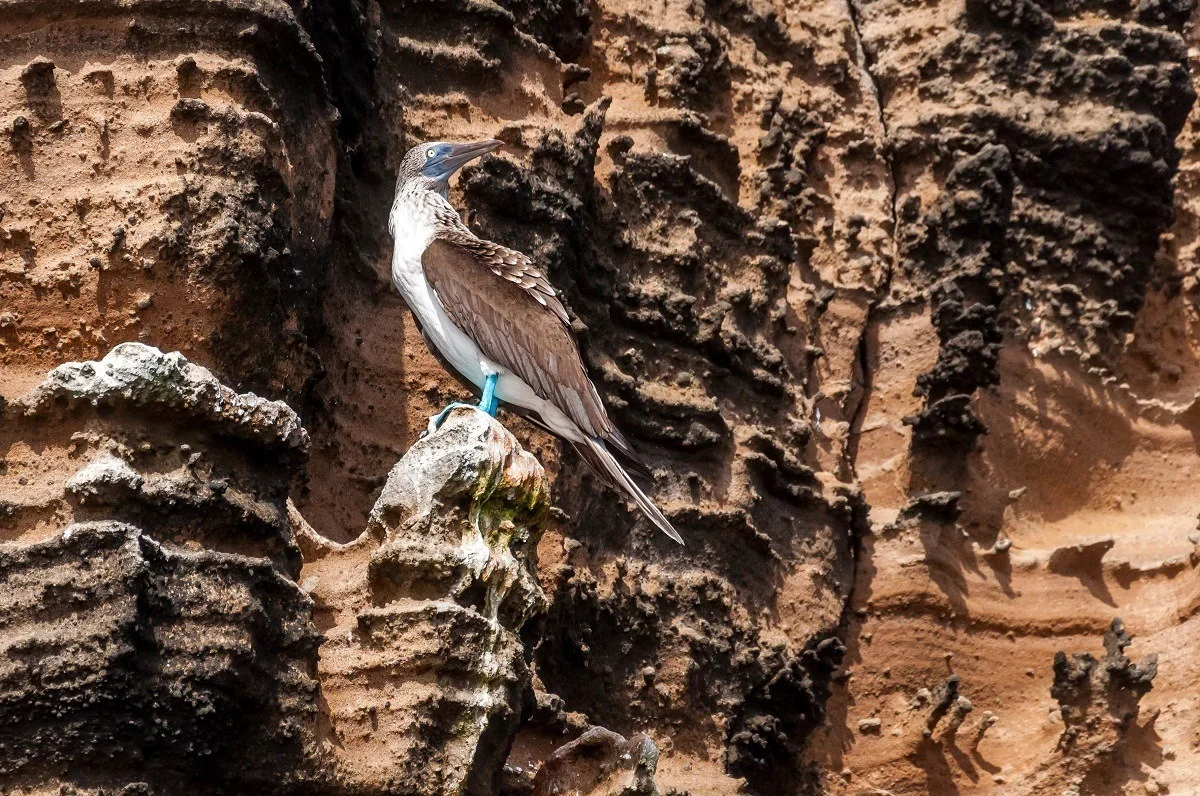
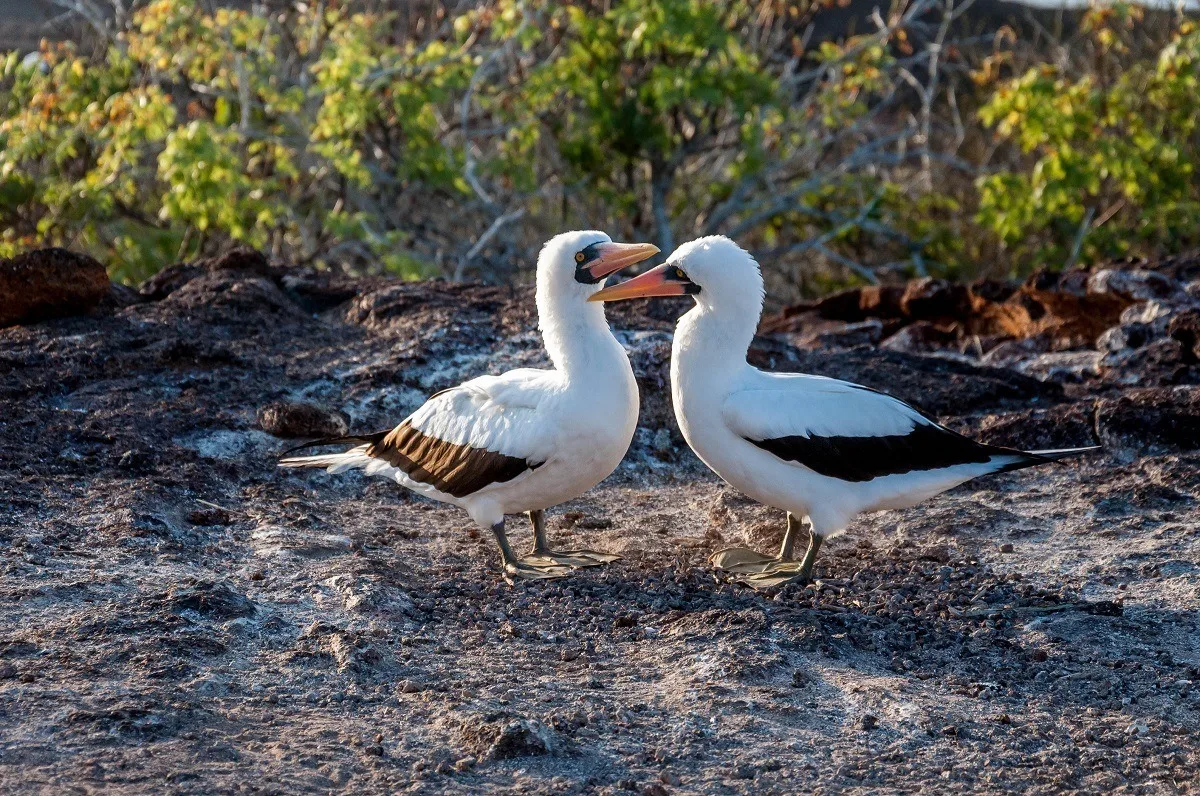
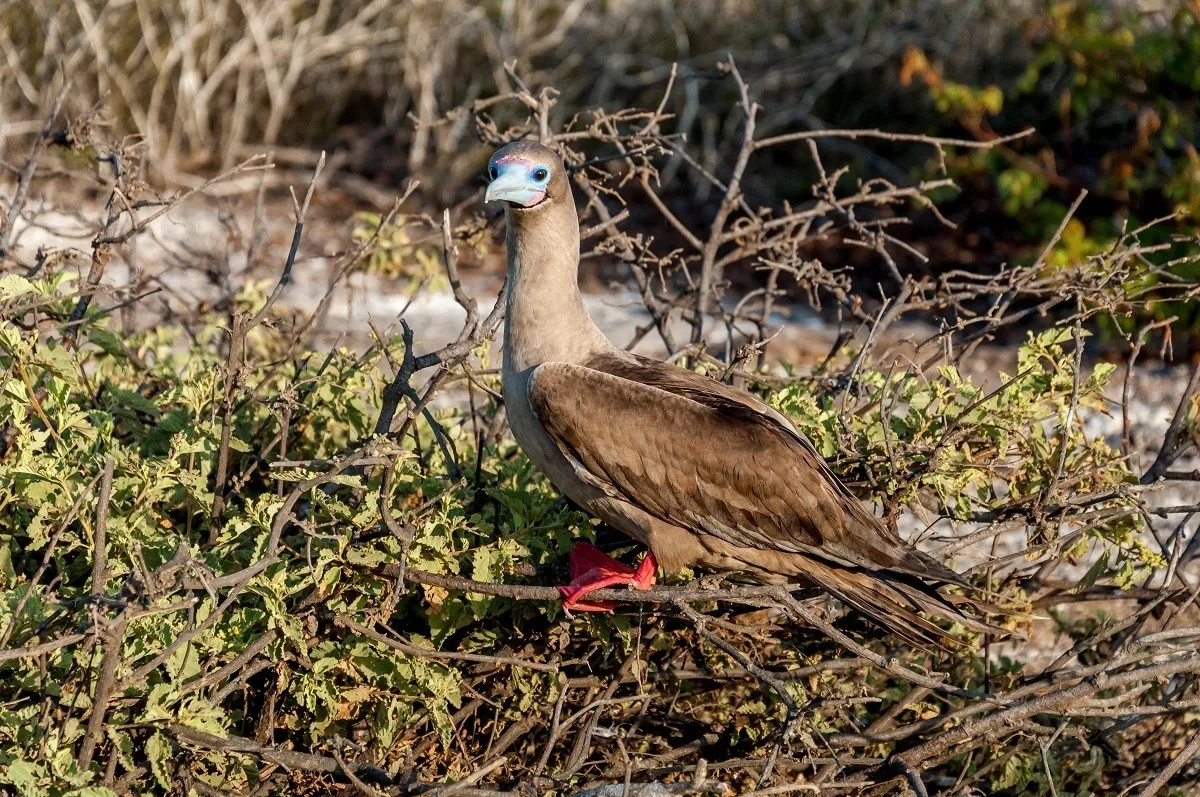
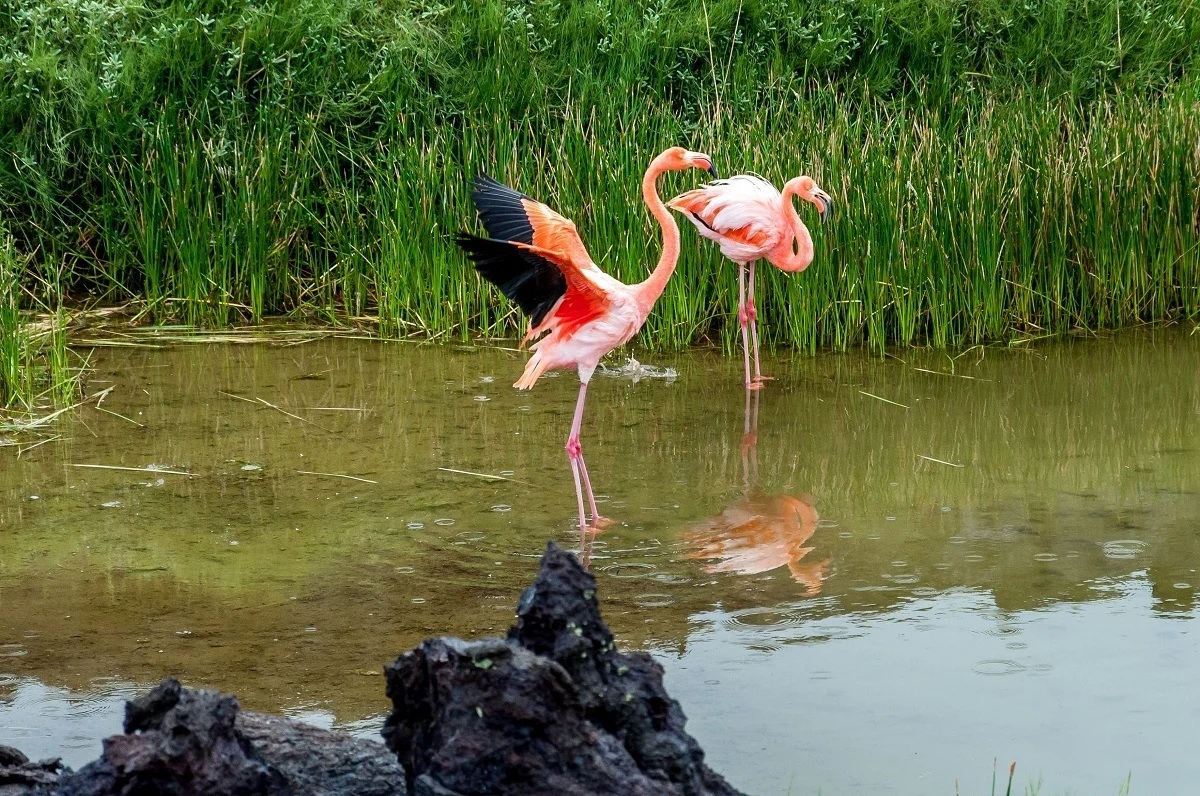
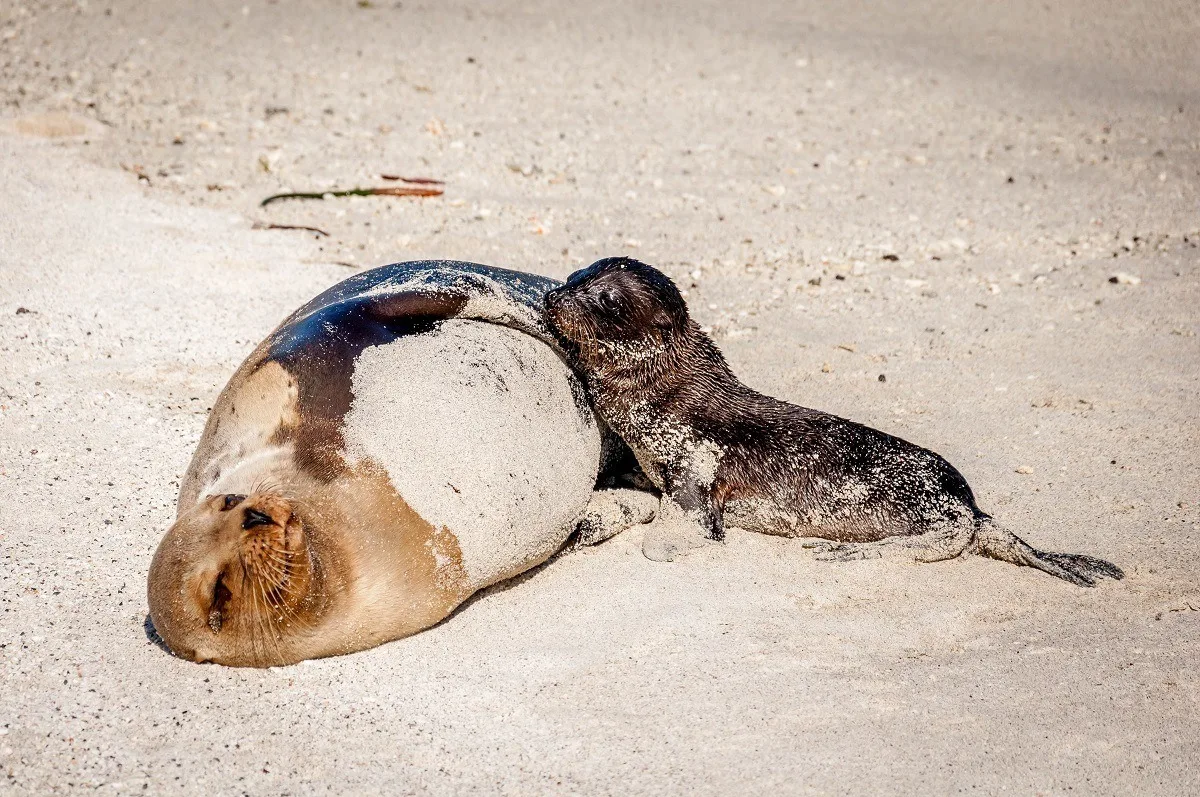
Valerie McMurtry
Tuesday 15th of November 2022
I have just returned from the most amazing trip of a lifetime. One week sailing to different islands and seeing most of the animals you have listed. I feel like I have been to Paradise and back. Valerie McMurtry
Lance Longwell
Wednesday 16th of November 2022
Thanks for your comment Valerie. We felt the exact same way!
Farida Bobat
Monday 22nd of February 2021
Hi, I have a big problem of being sea sick. So though I really want to see Galapagos I'm scared of being sick. Will it be ok to do only land tours or will I be missing a lot? Thank you
Laura Longwell
Monday 22nd of February 2021
I also get terribly seasick and had the same concerns, especially since the boats in the Galapagos are small. I took one non-drowsy Dramamine (Dimenhydrinate) during the day and one drowsy pill at night, and I was fine through our whole cruise. If you're able to manage your symptoms with medication, that would be my recommendation.
Plenty of people go to the Galapagos and only do land tours. It would still be spectacular. But, in my opinion, you would be missing out by not having the water-based experiences.
Amanda
Monday 16th of October 2017
You saw so many animals! I am looking to plan a trip and can't decide what time of year to go. What time of year did you go?
Laura Longwell
Monday 16th of October 2017
We were there in March because we wanted the warmer water. The good news is that there's tons to see no matter when you go.
Carlos Soto
Tuesday 12th of September 2017
Hi,
Nice to know that you have enjoyed your trip to Galápagos. I'm Ecuadorian and have been in the archipelago 3 times. Currently I'm designing a board game about preserving Galapagos wildlife, but still don't have a name for it. What do you think would be a good name?
Cheers,
Carlos
Lance Longwell
Friday 15th of September 2017
Sorry. We're not super creative that way and we don't play a lot of games. Maybe "Darwin's World."
fadiyah
Saturday 5th of March 2016
what a cute animal,, Frigatebird first time i see this animal. I wish to visit this wonderful place someday